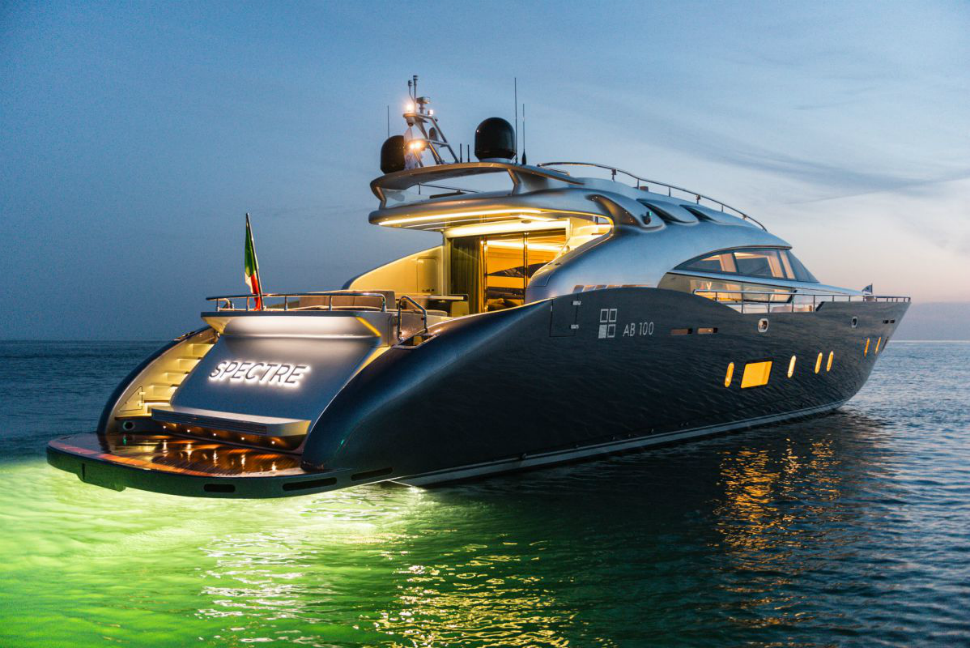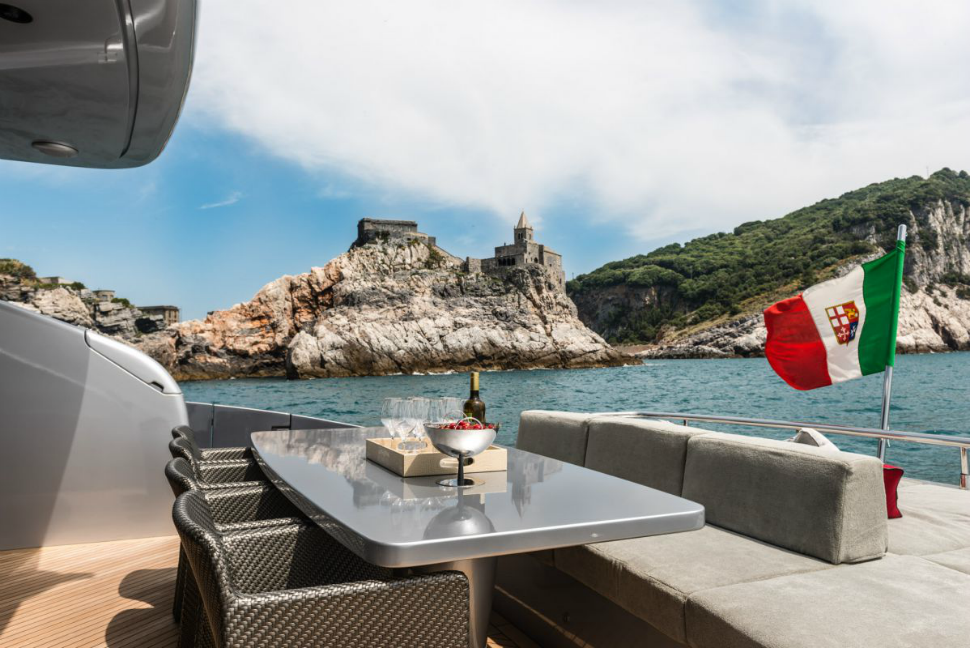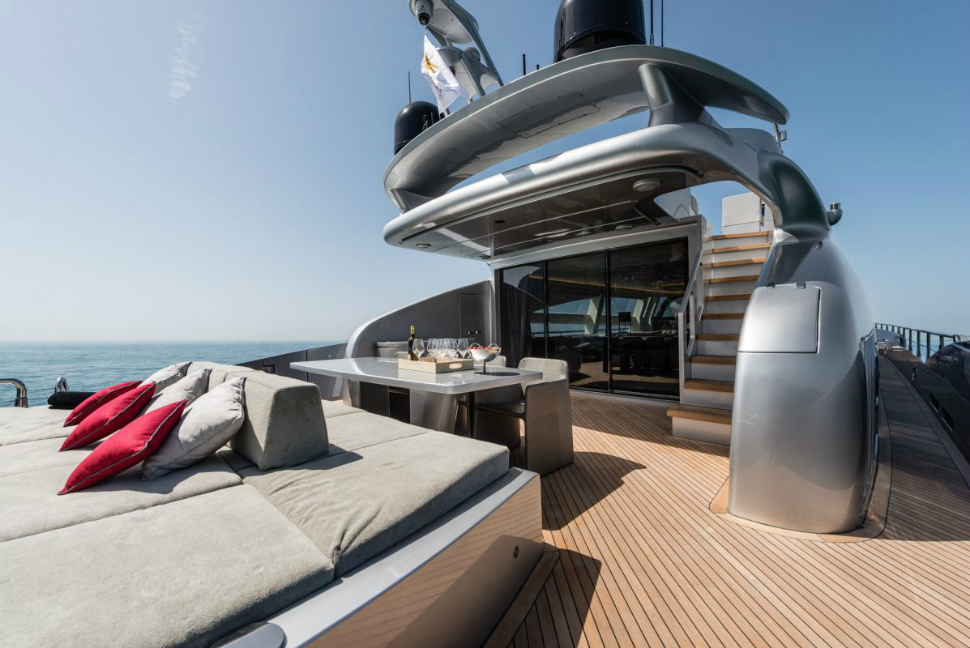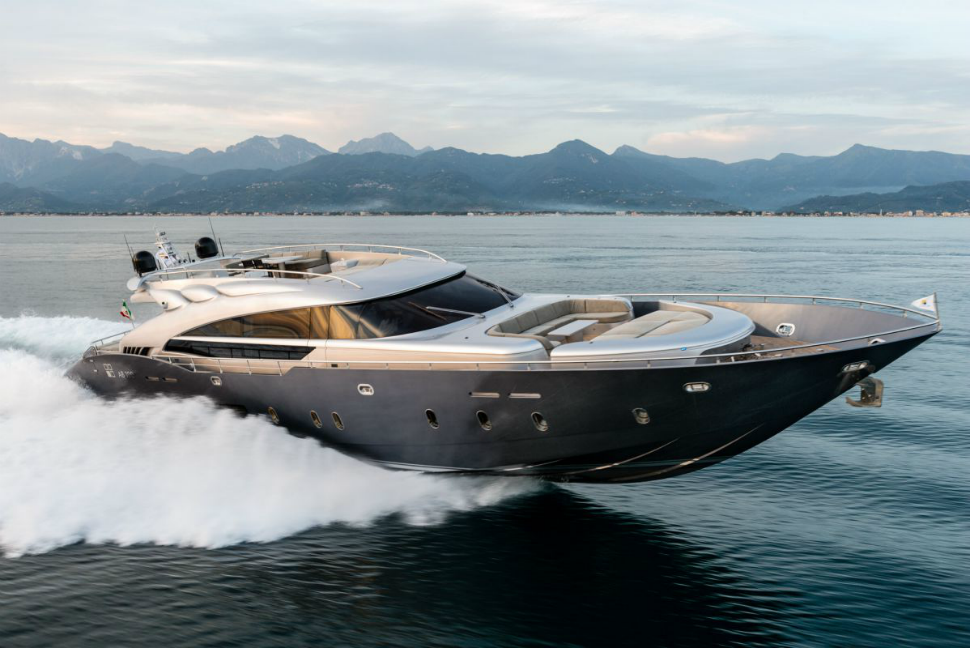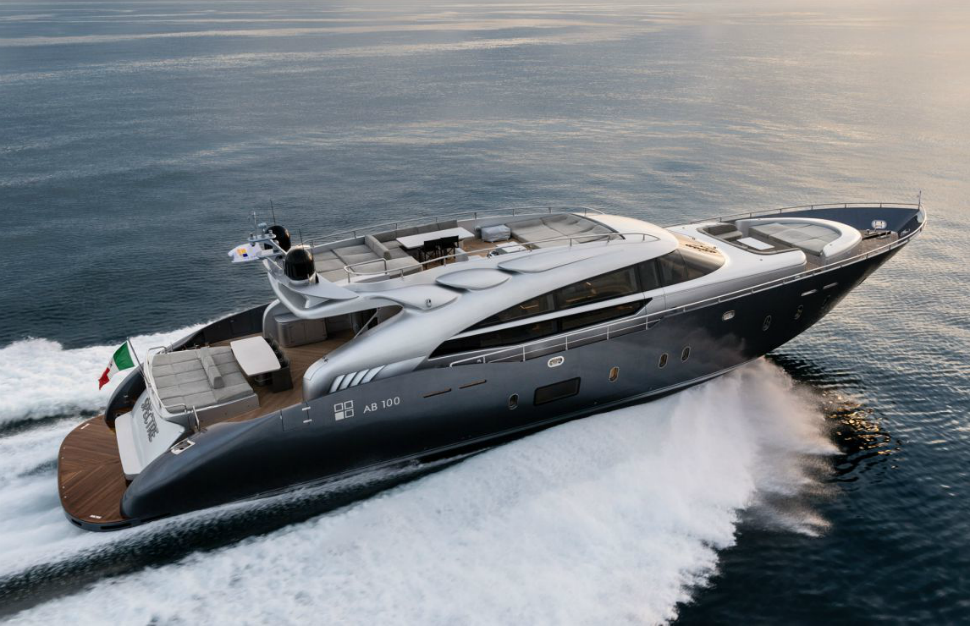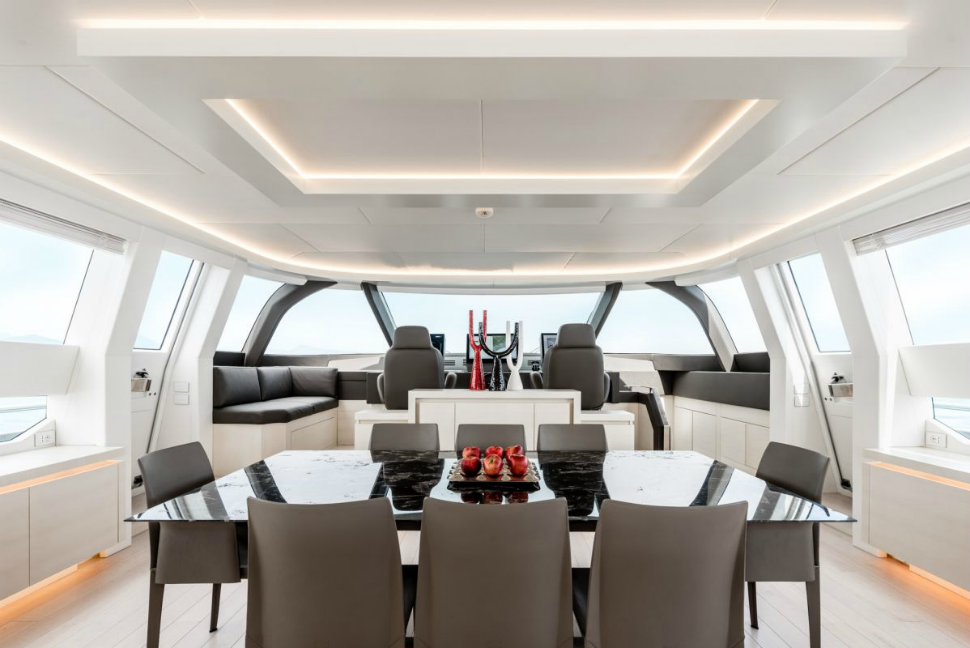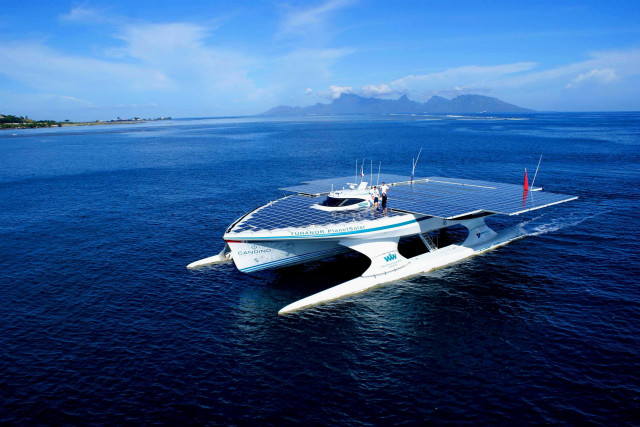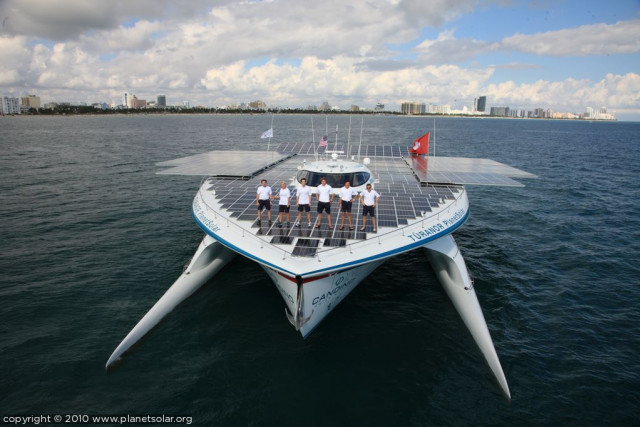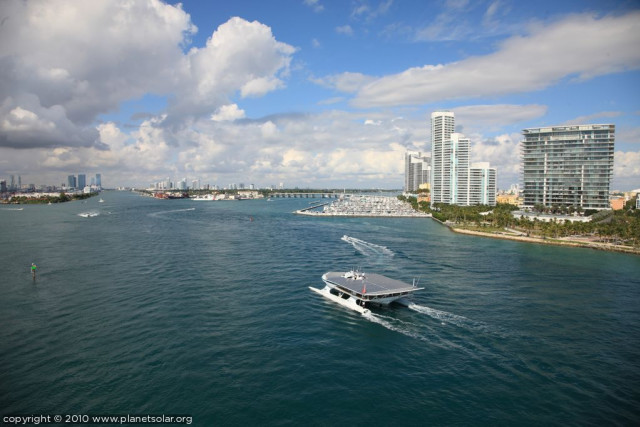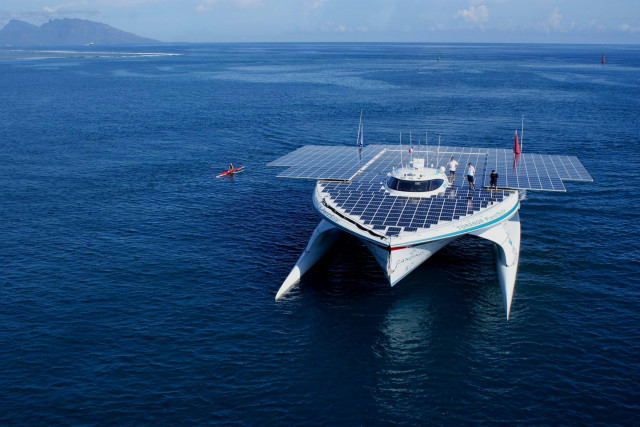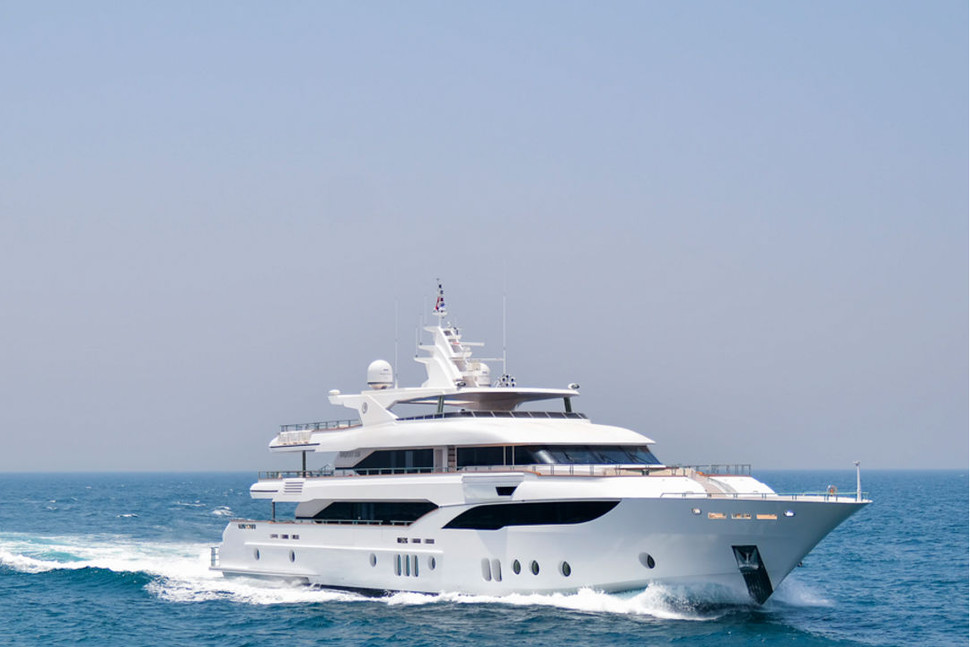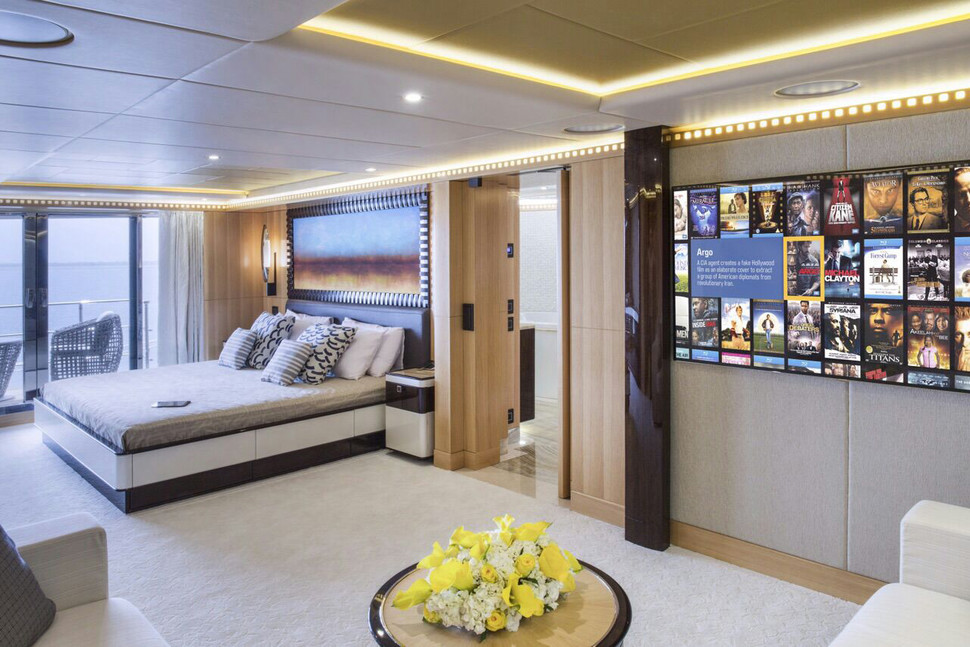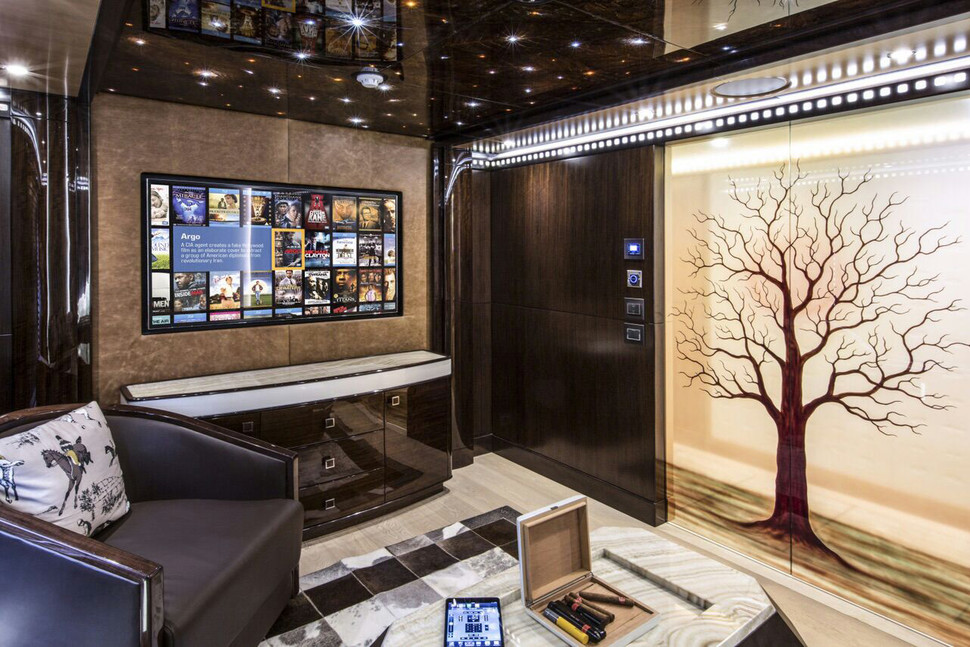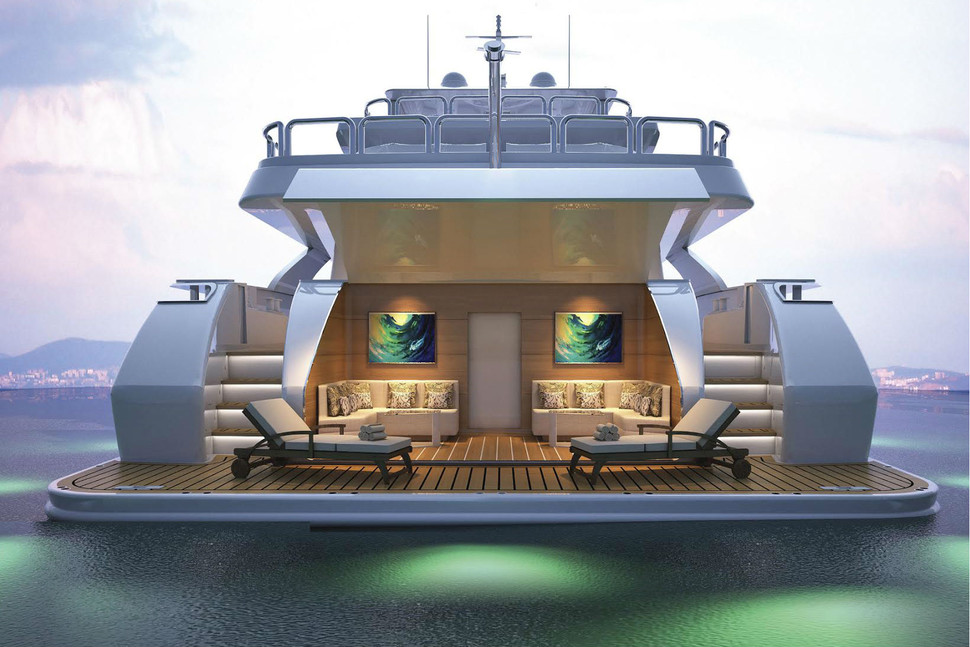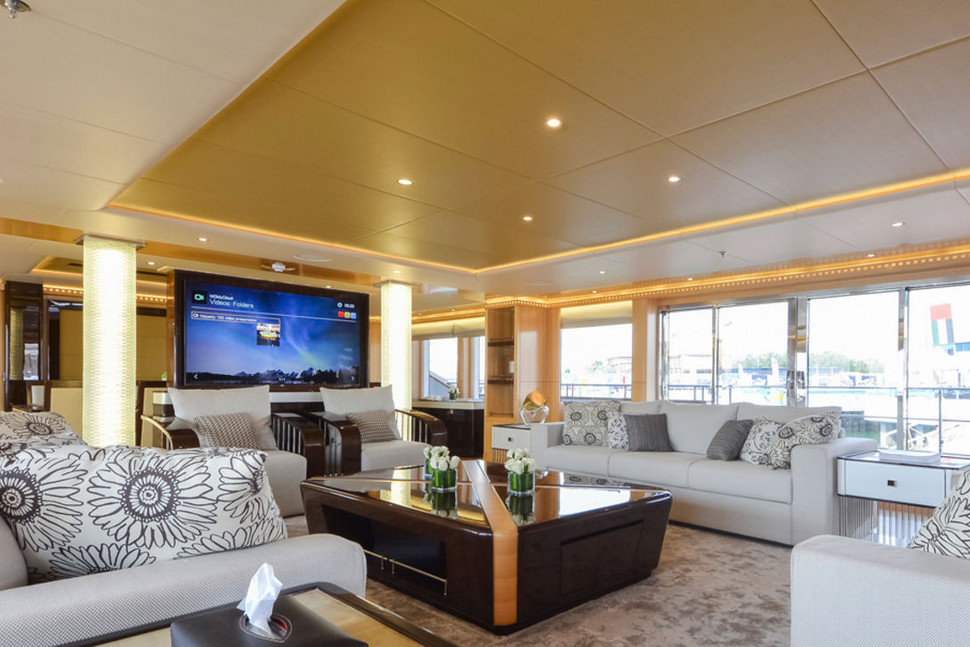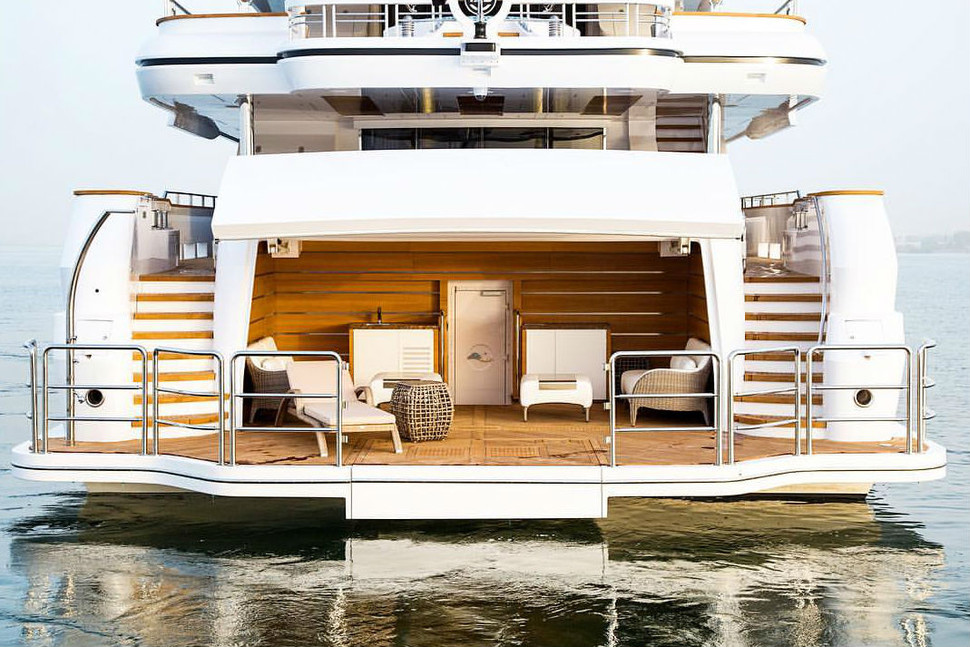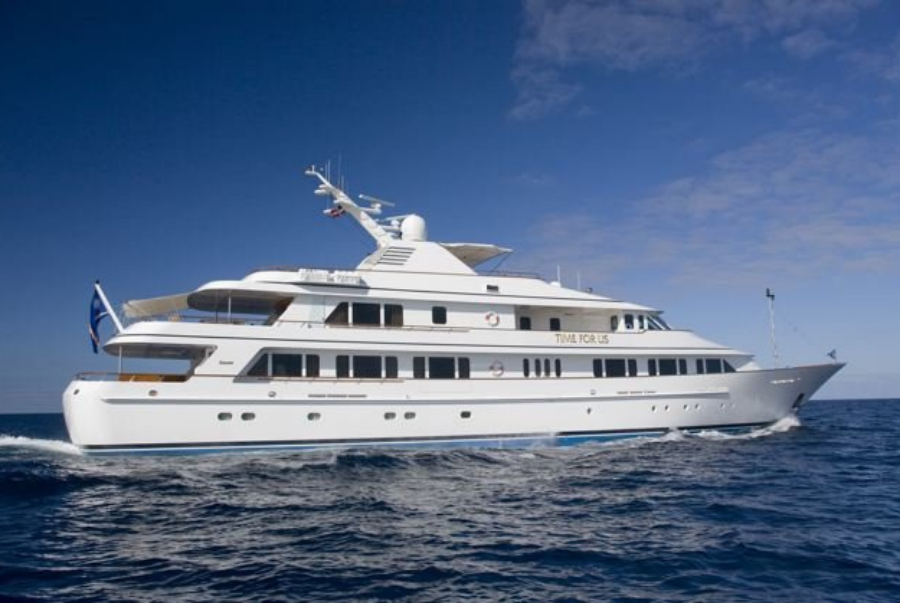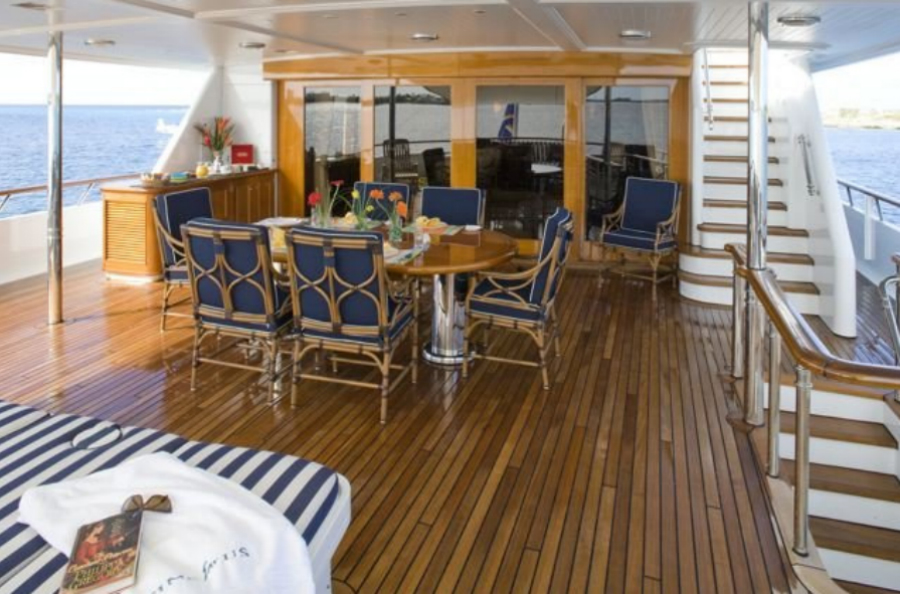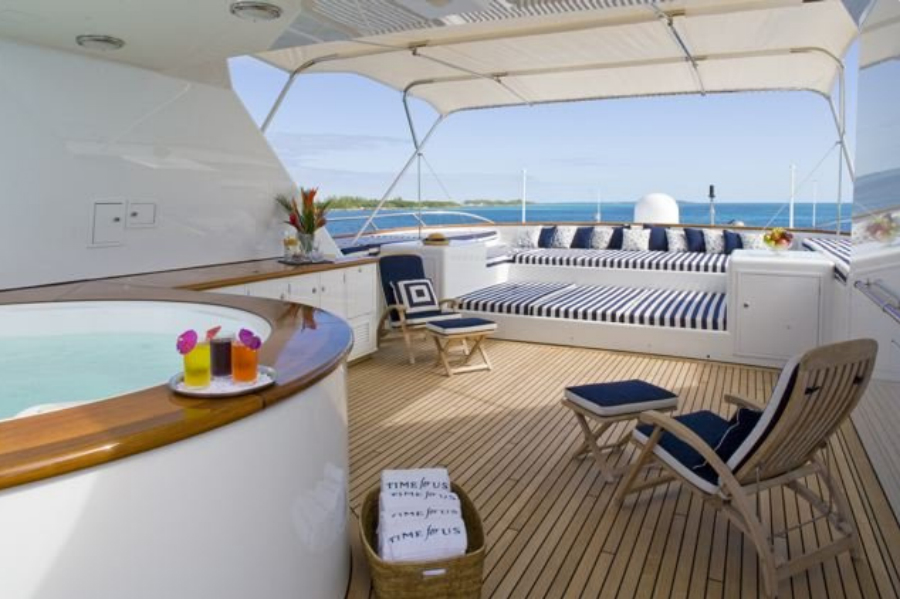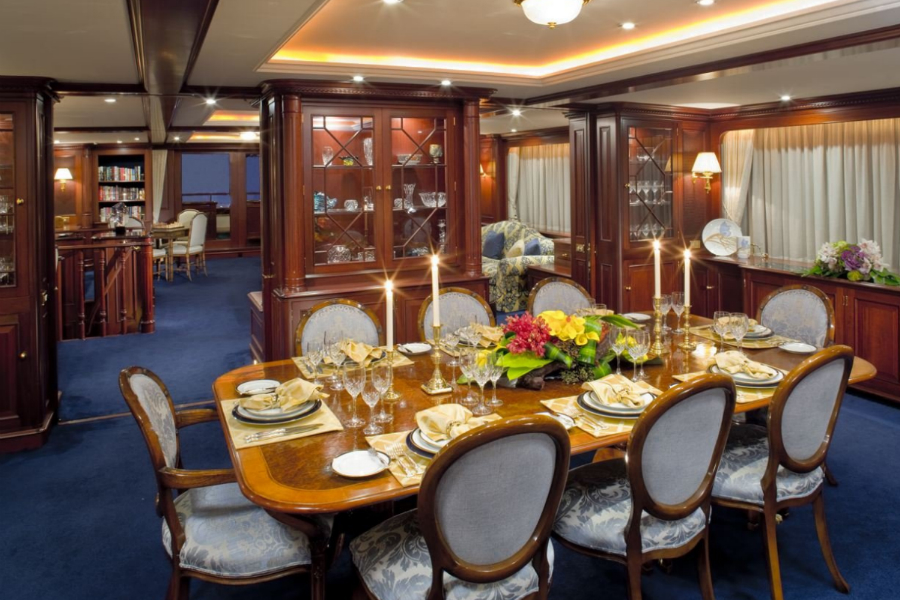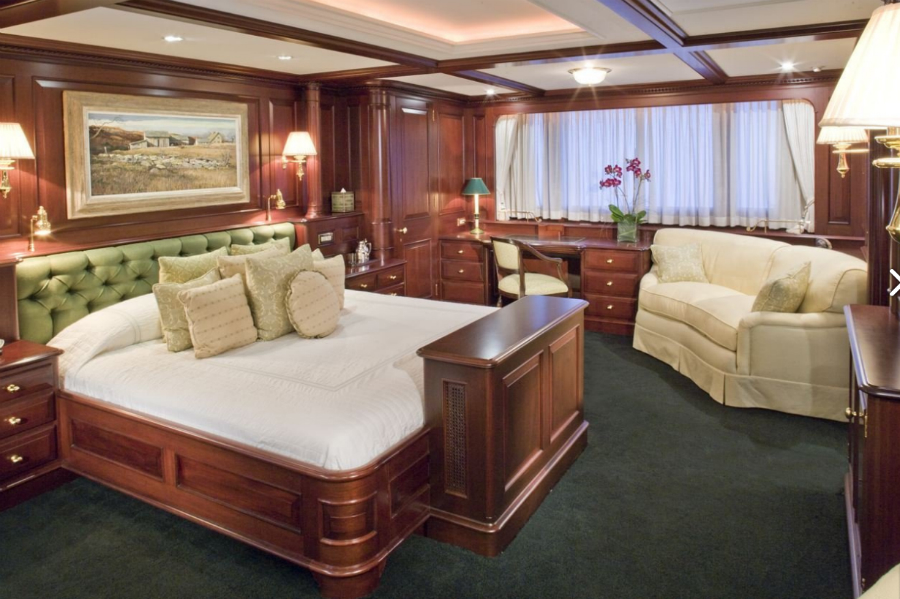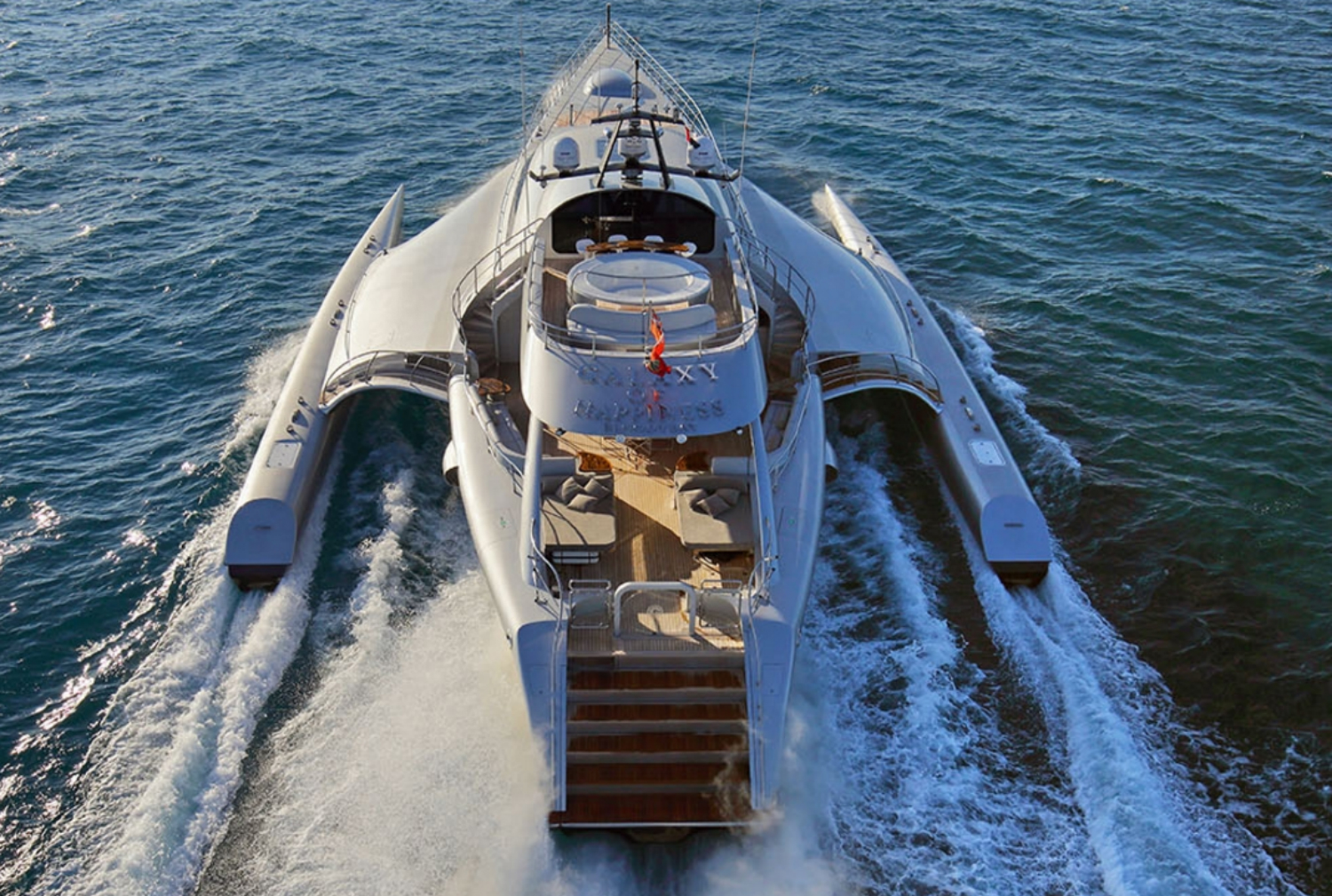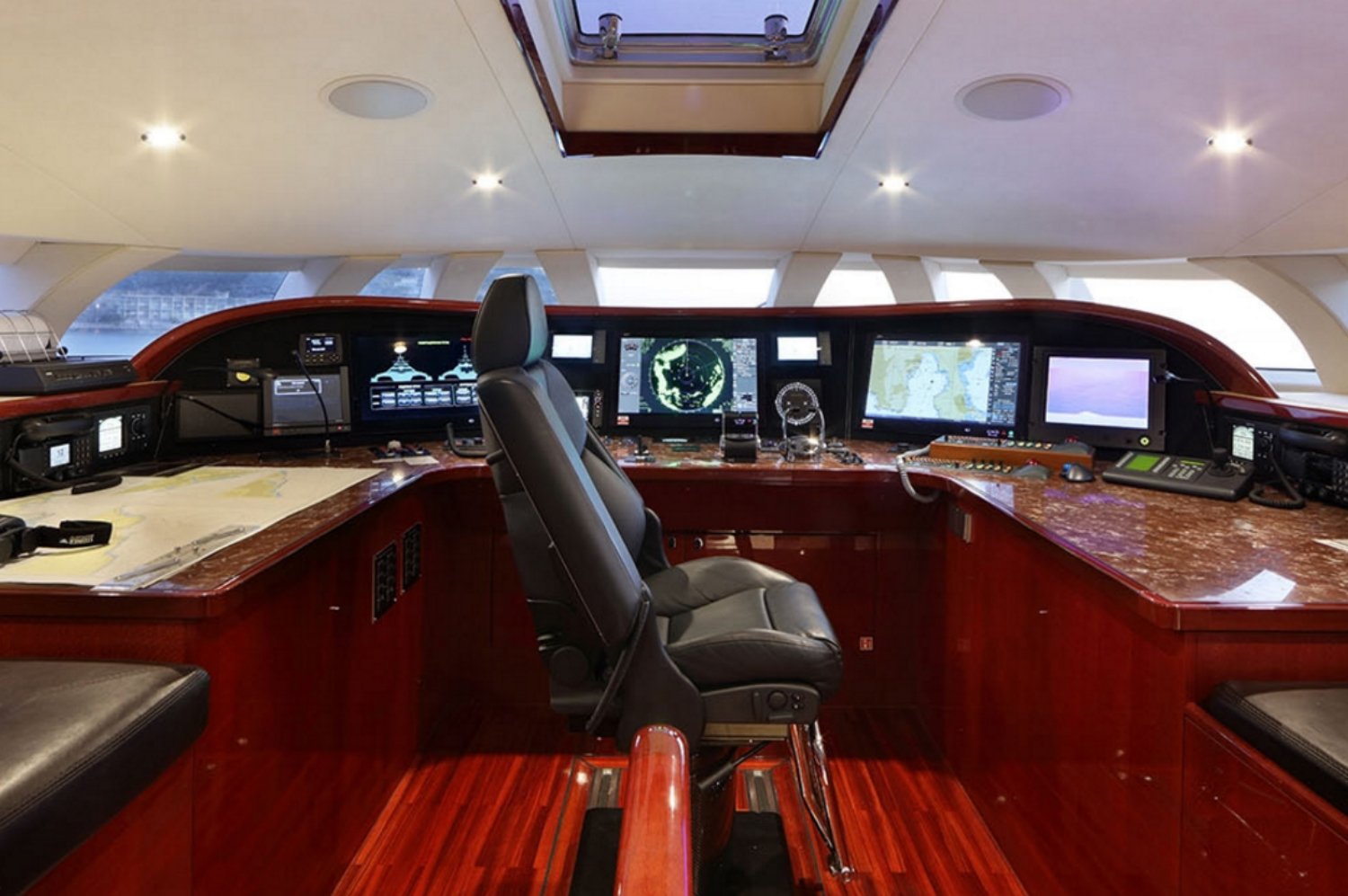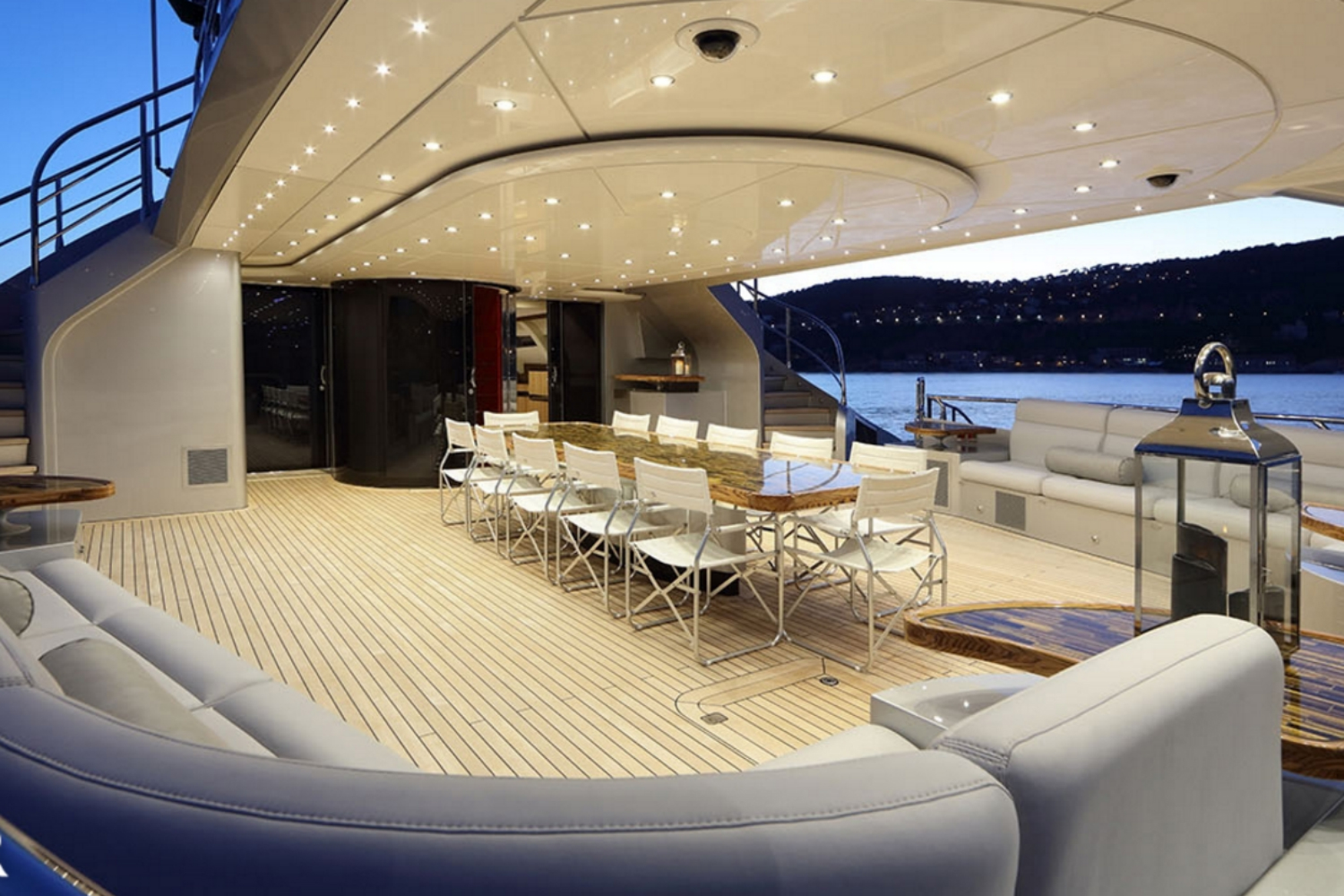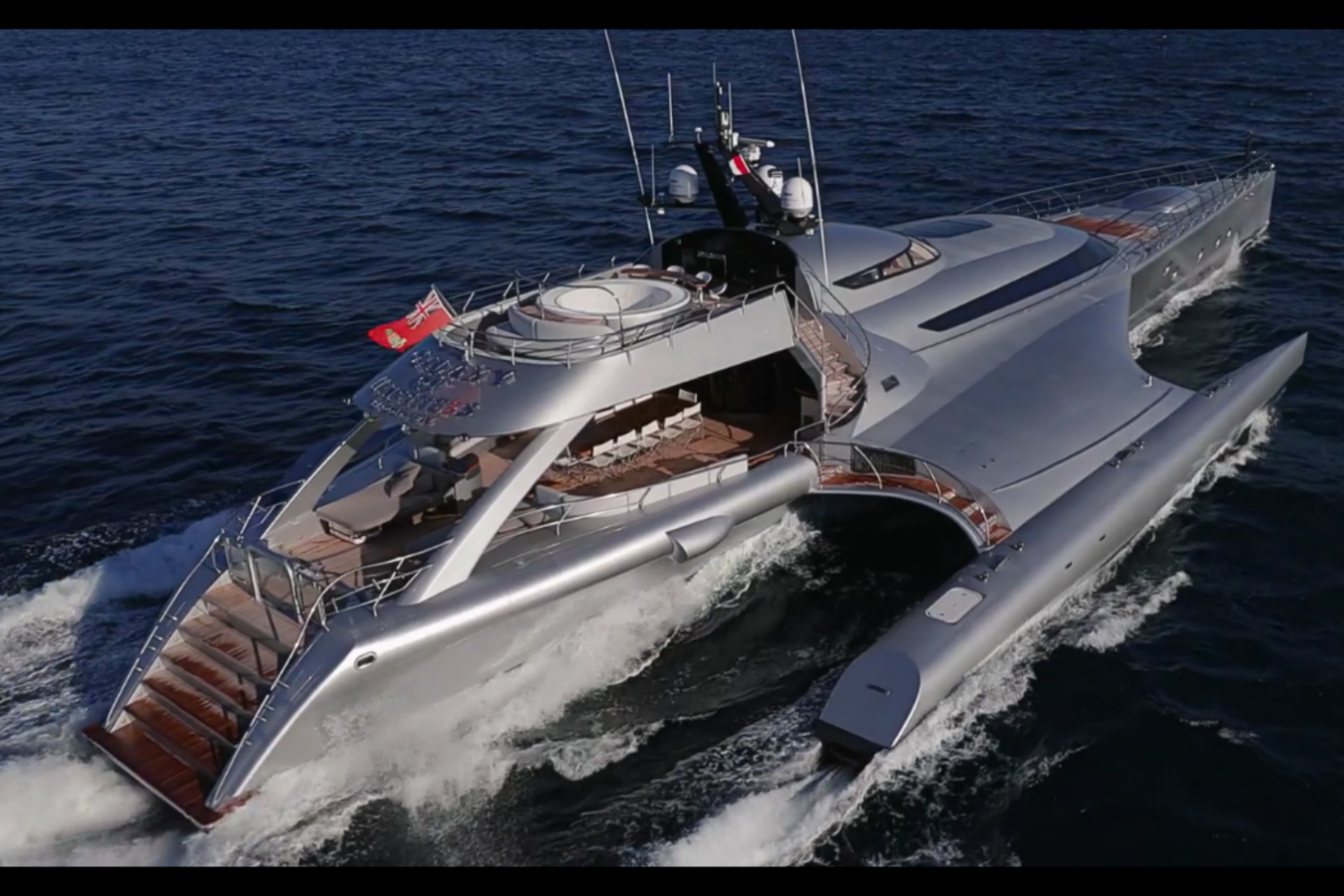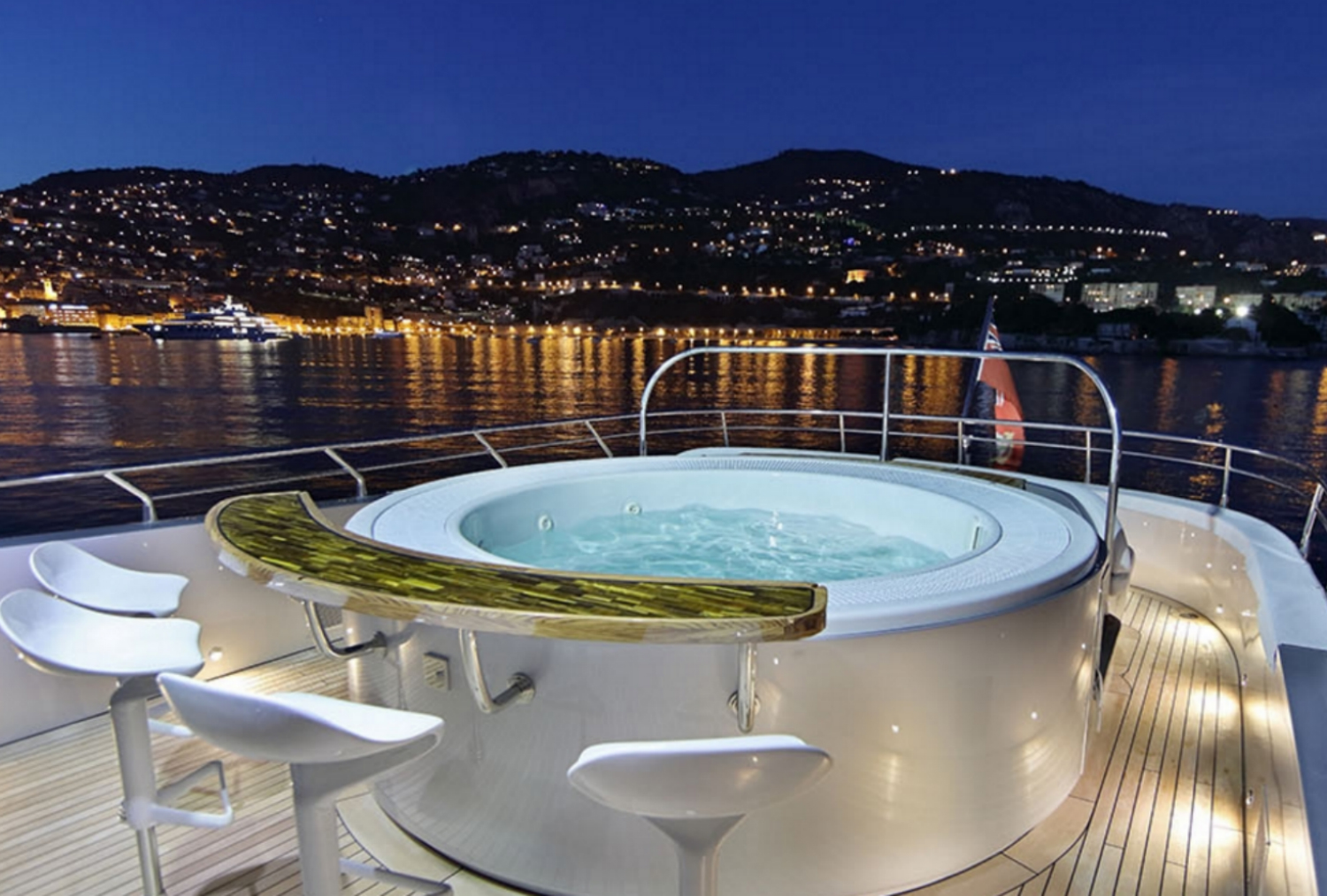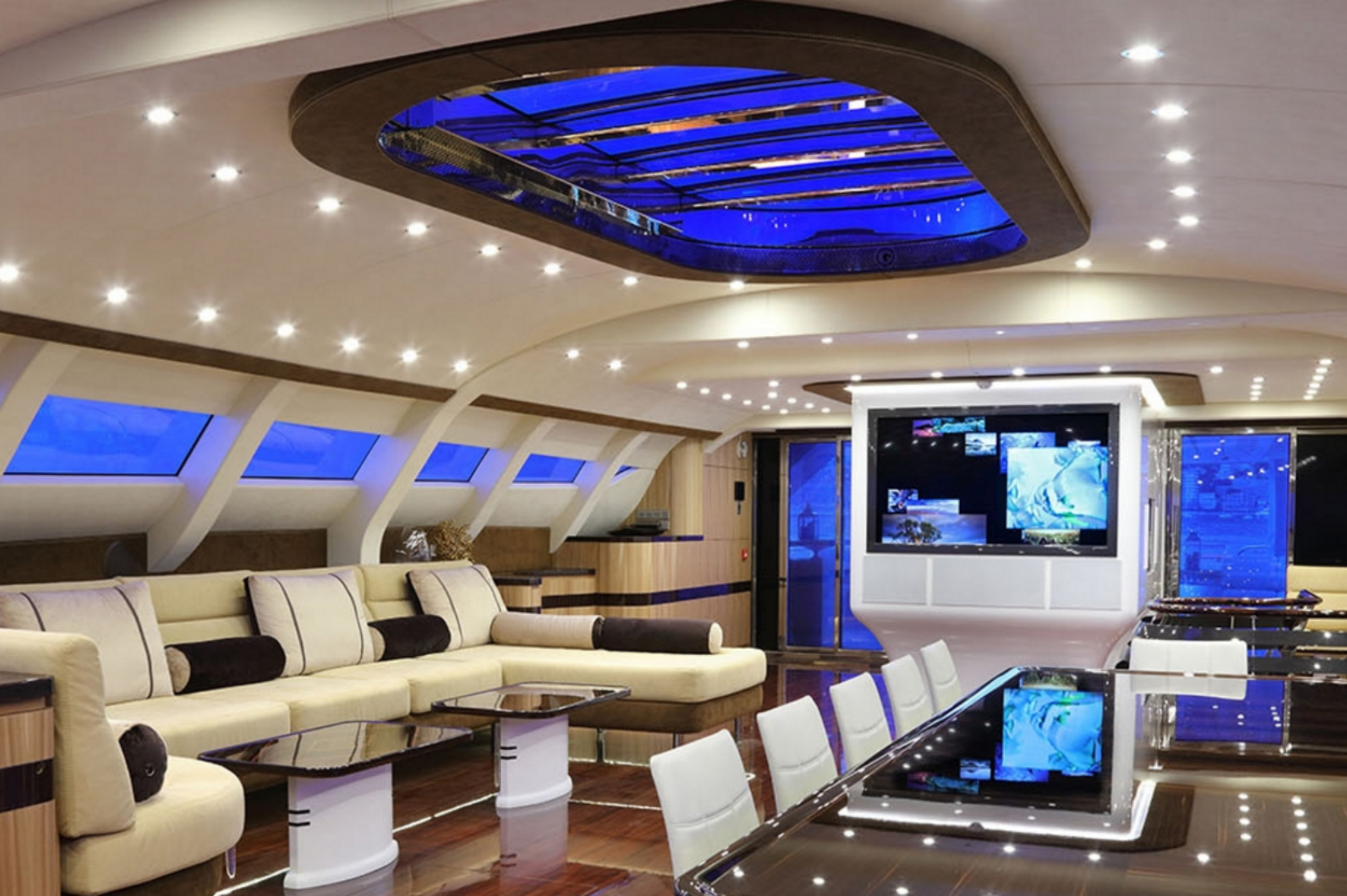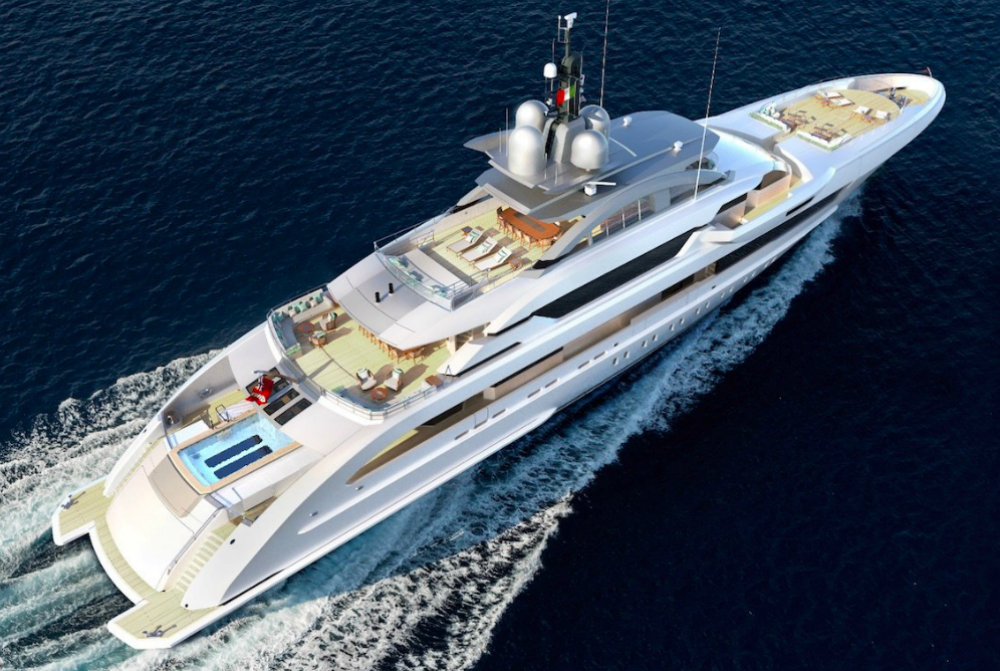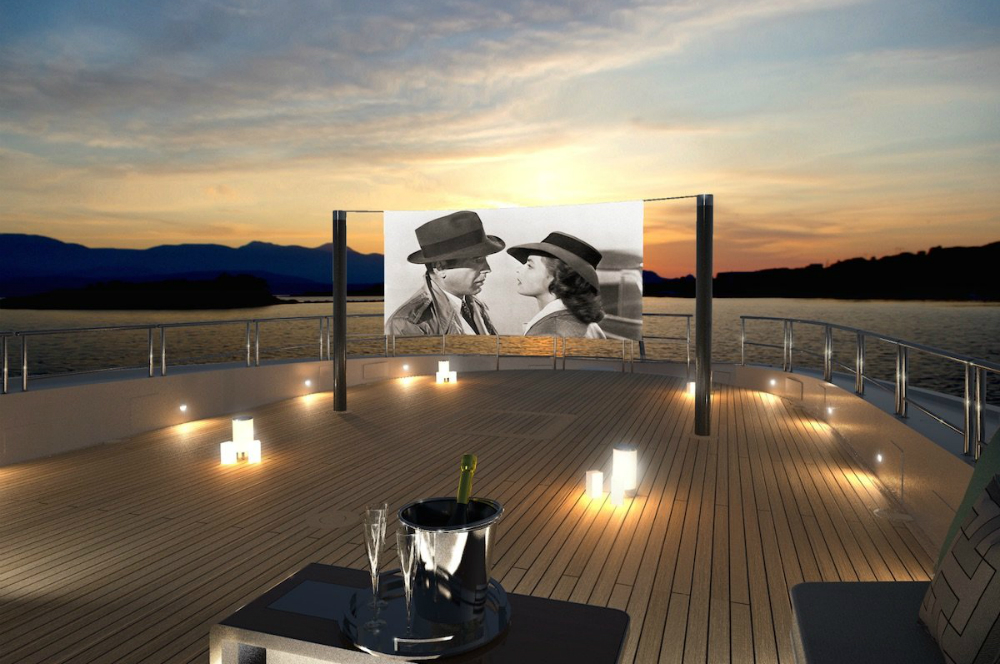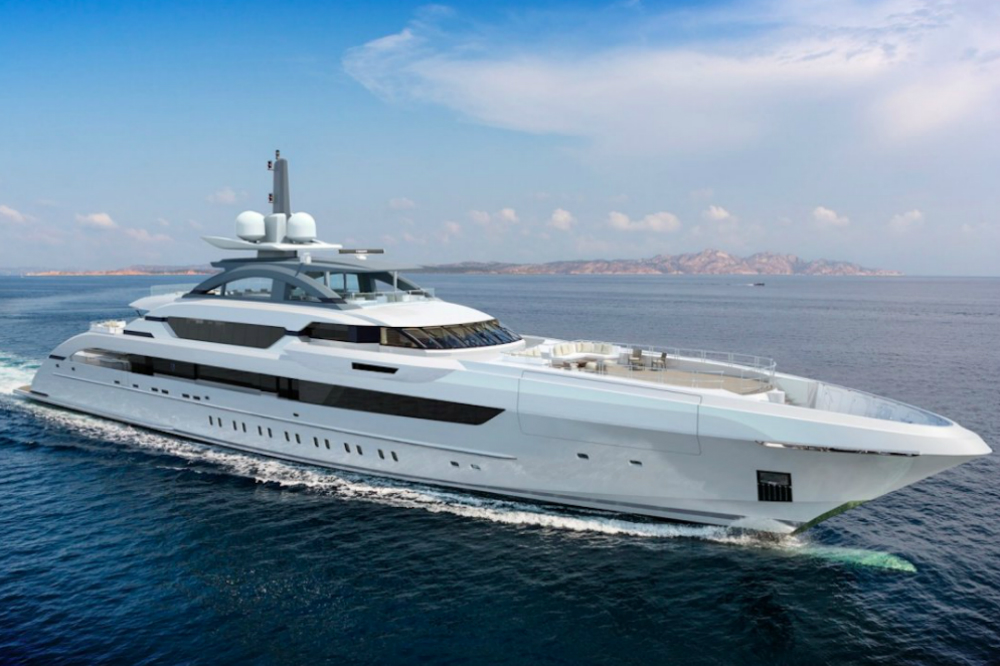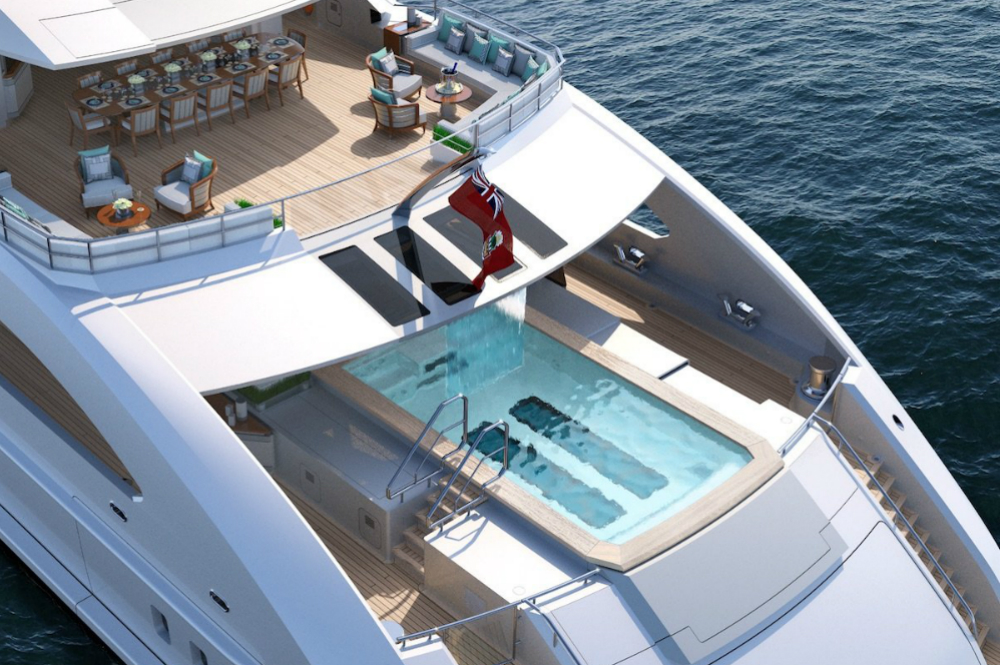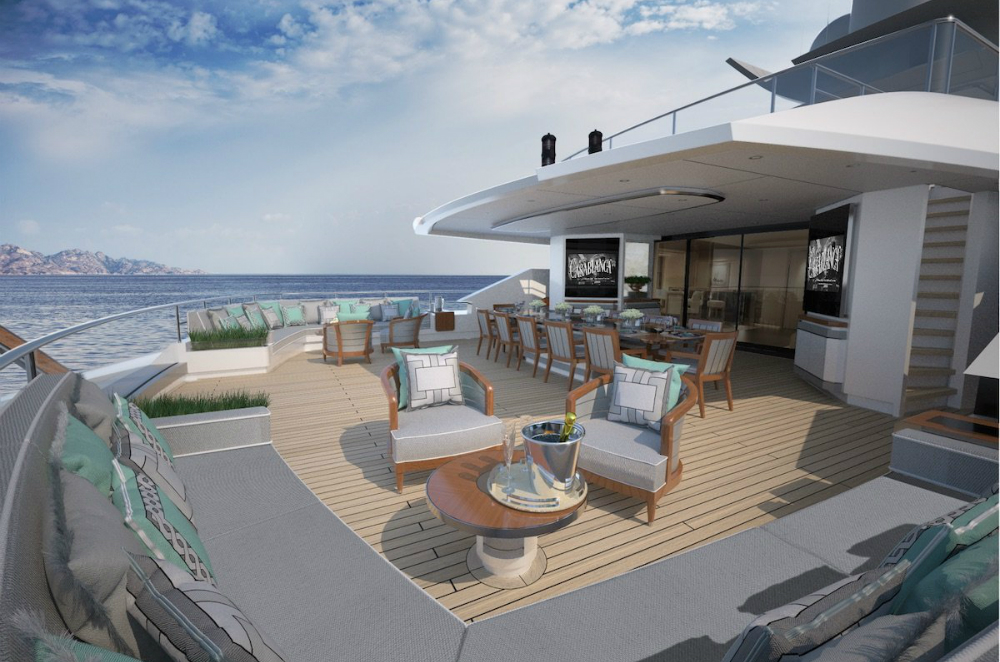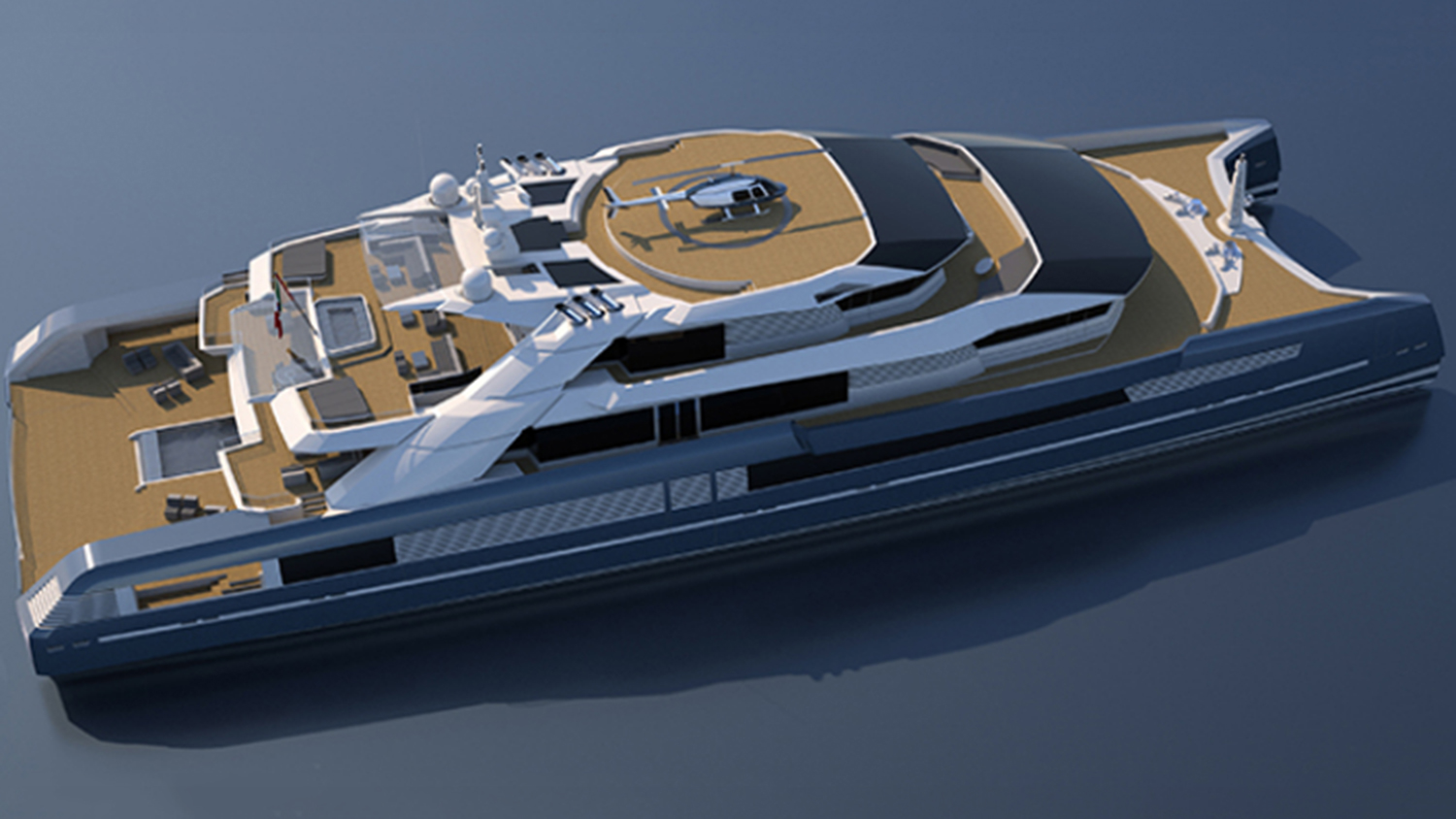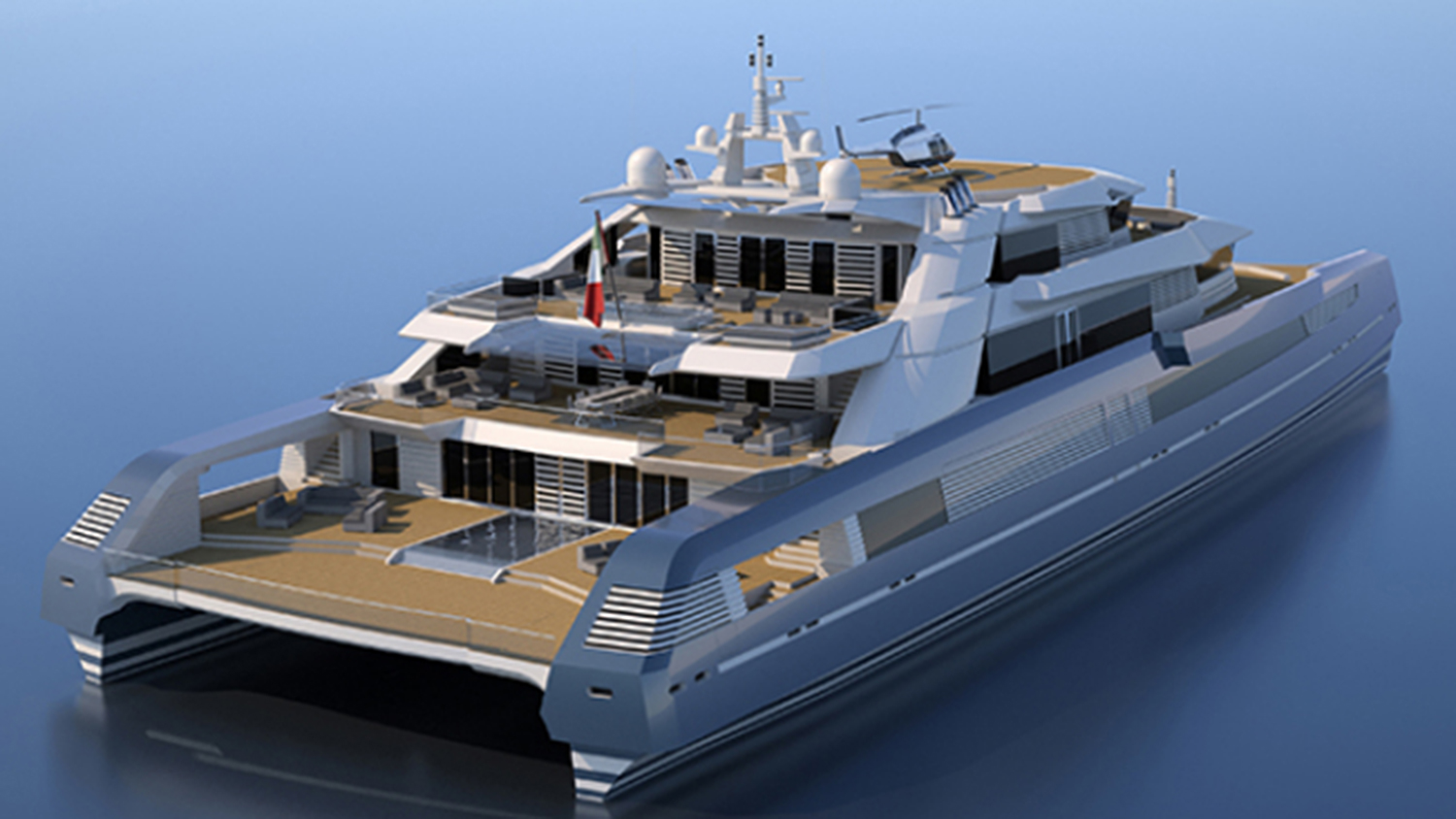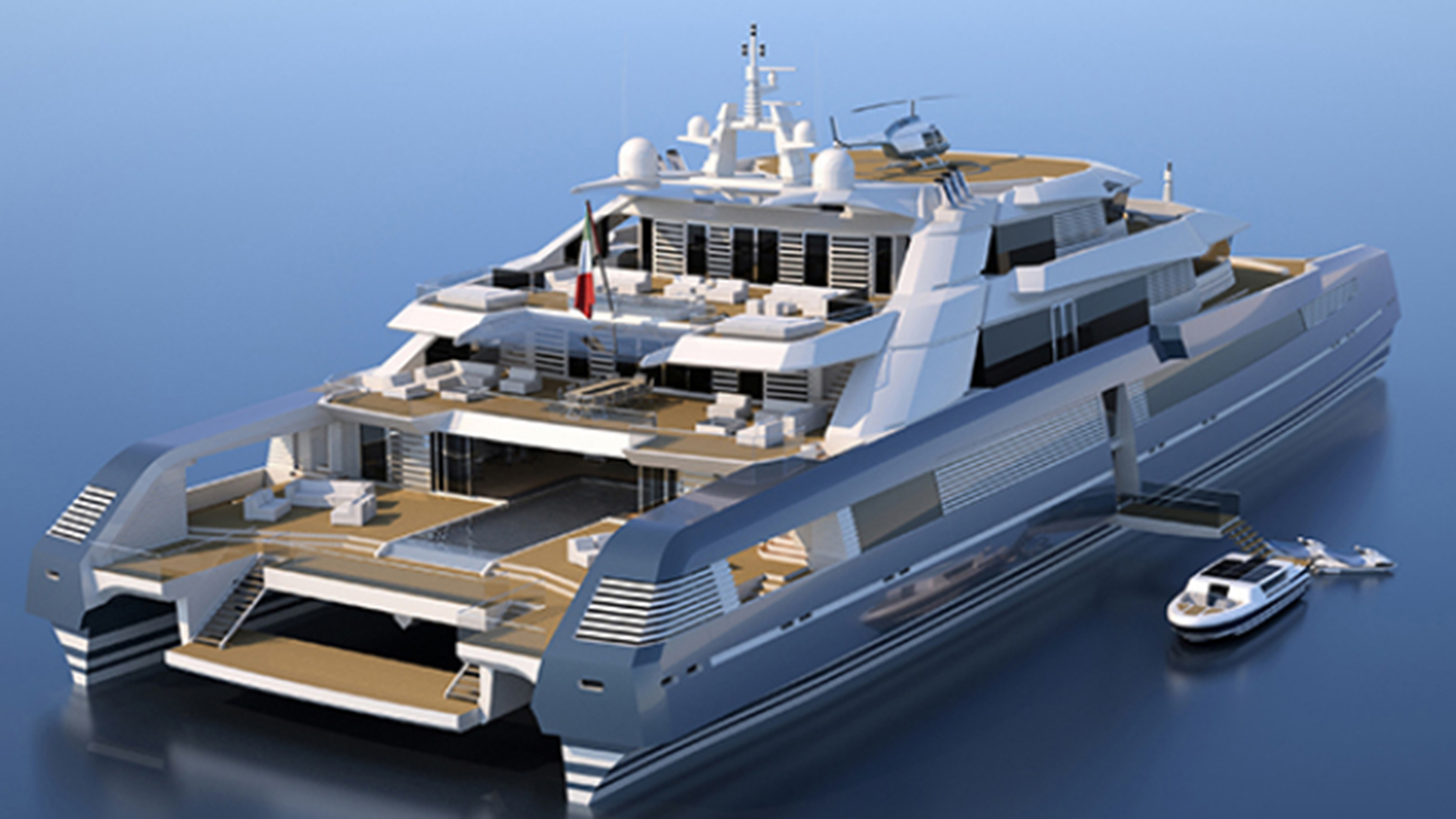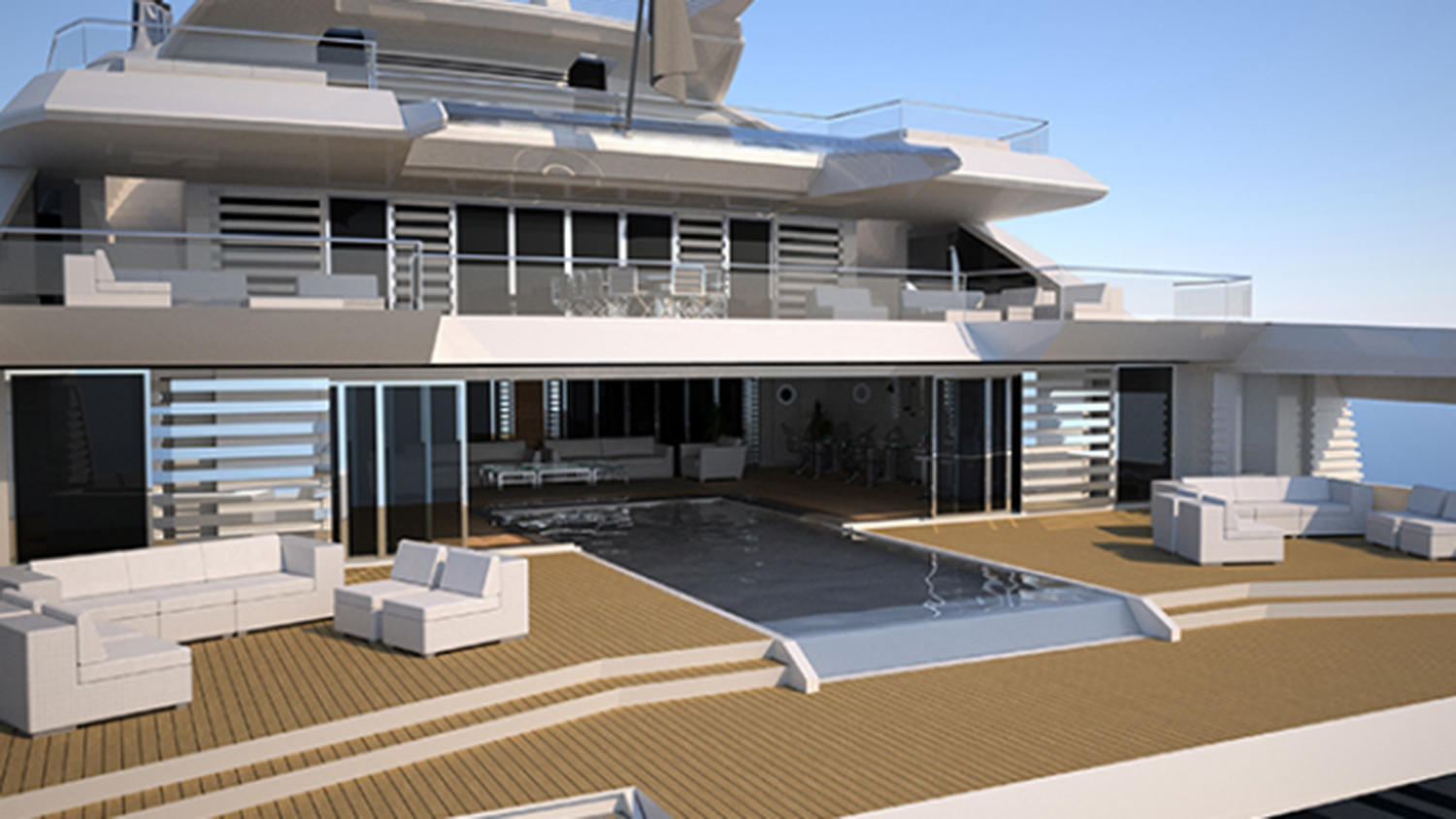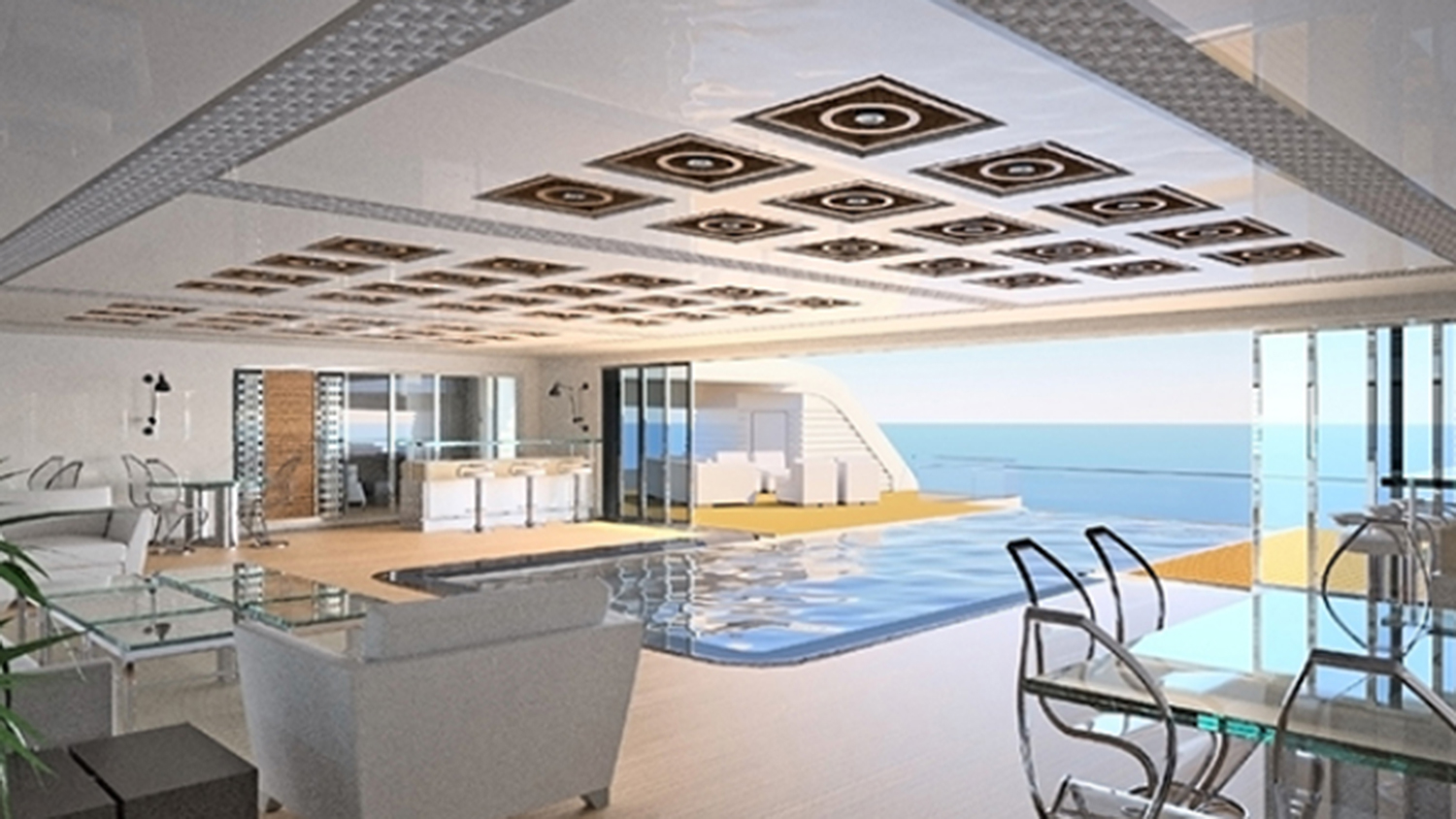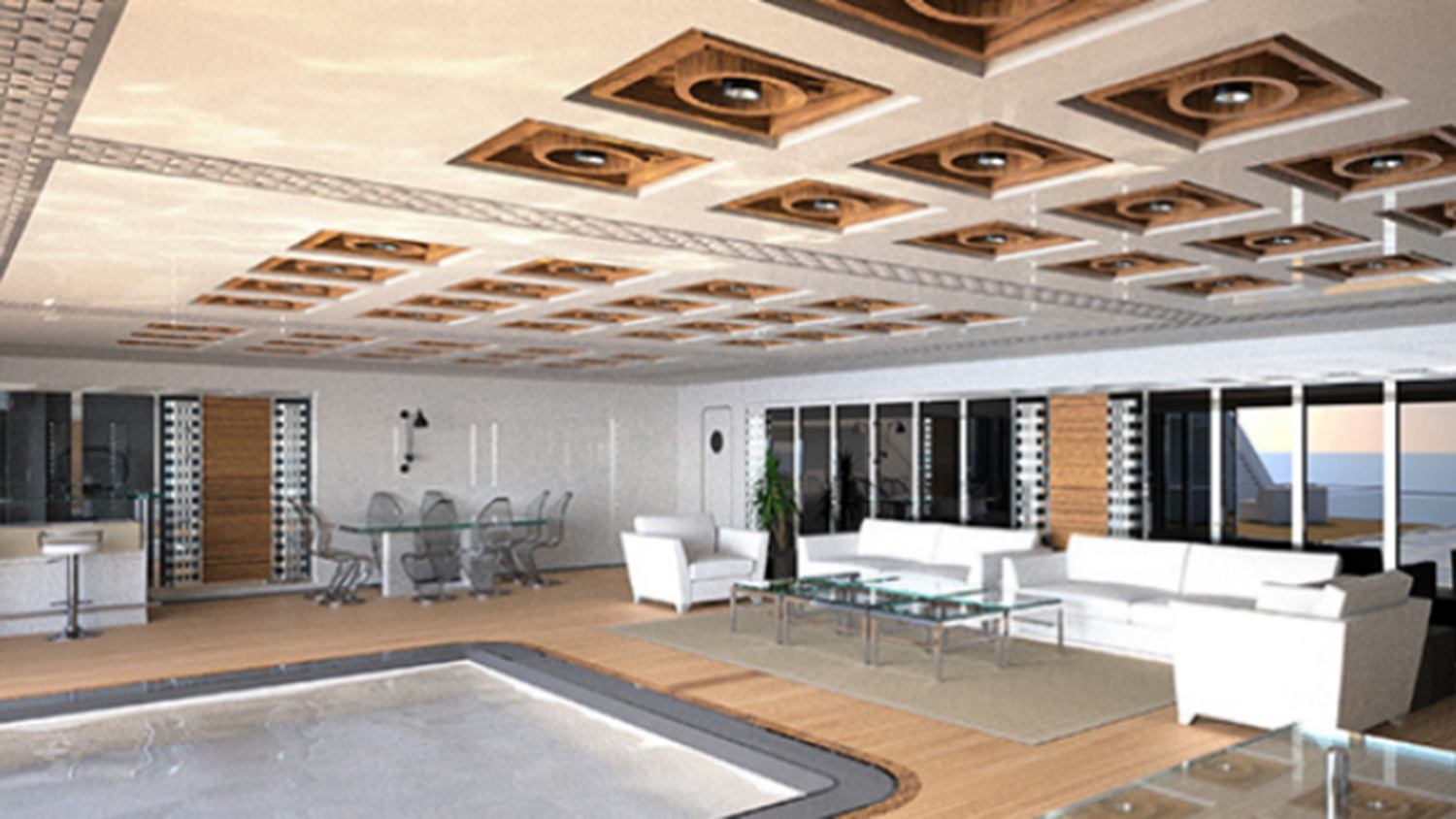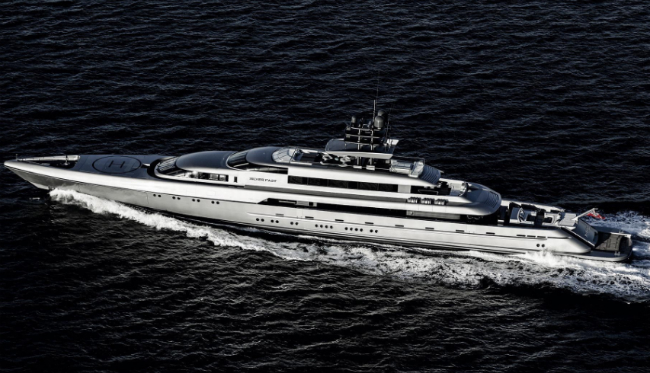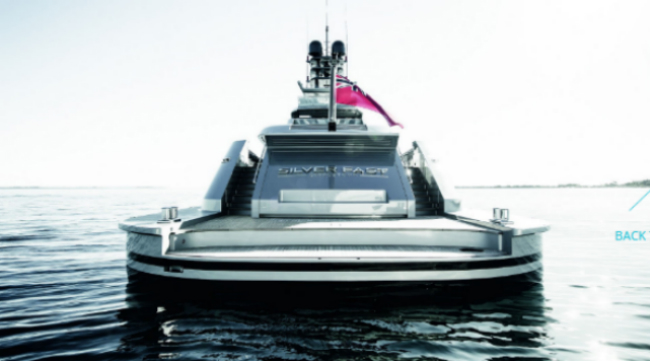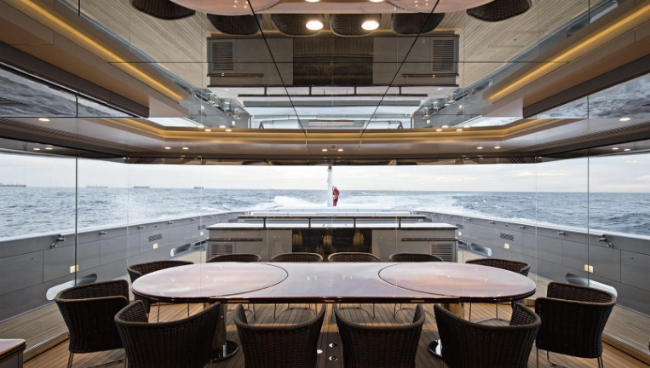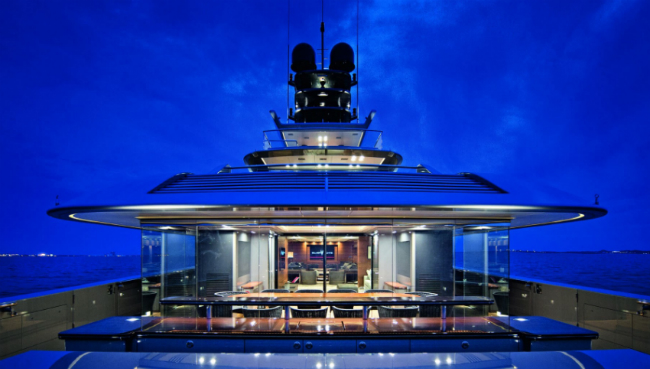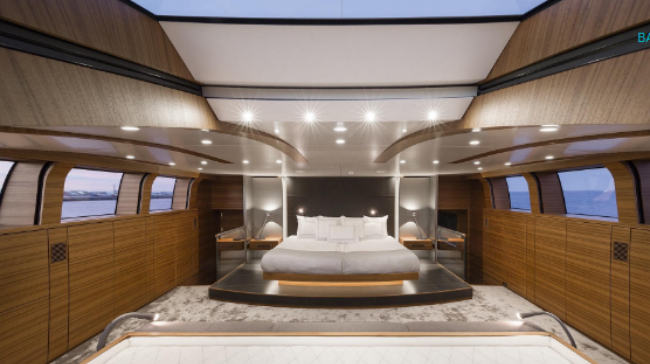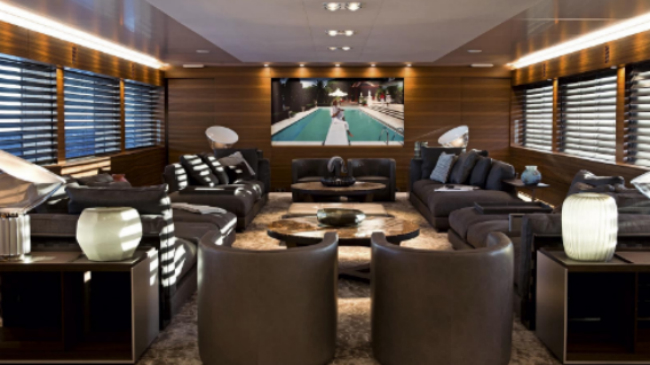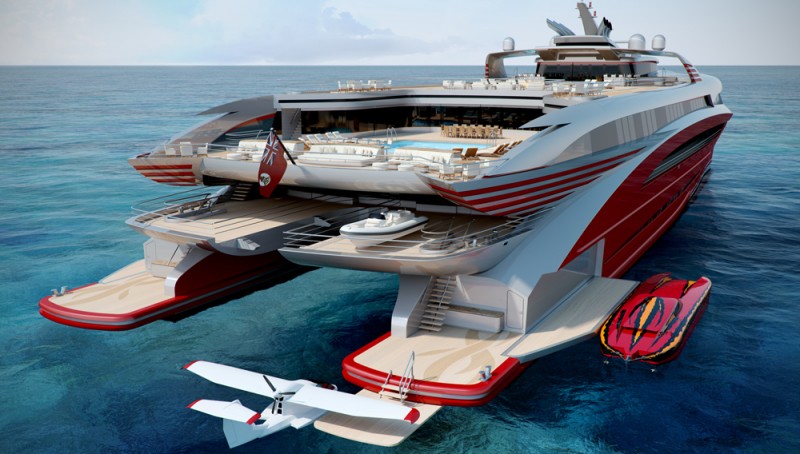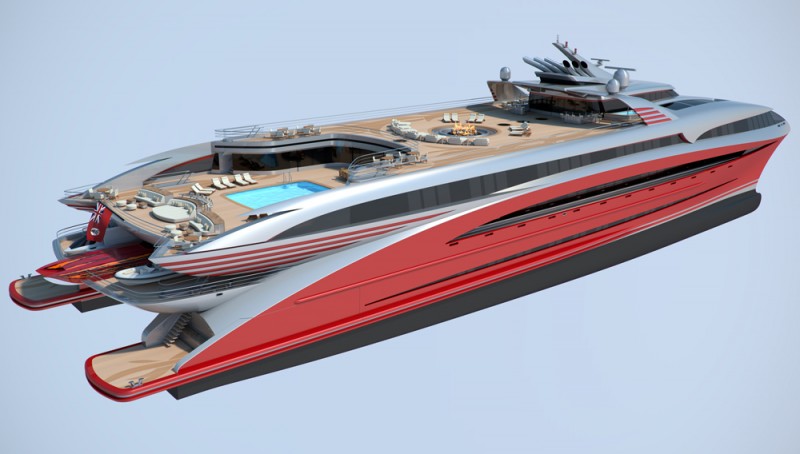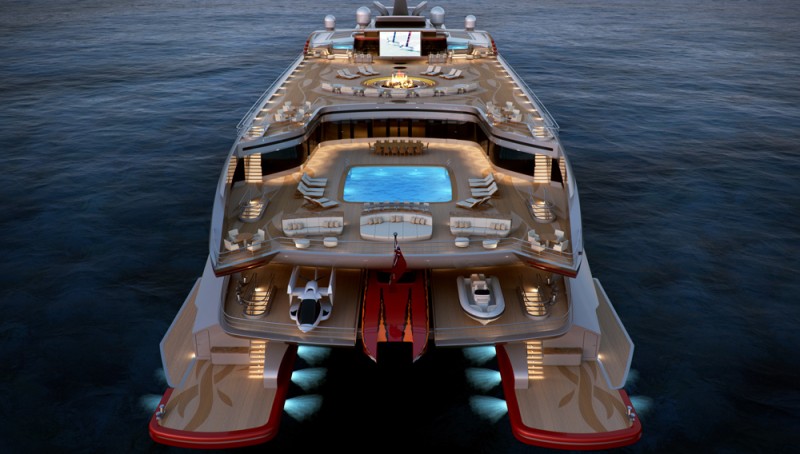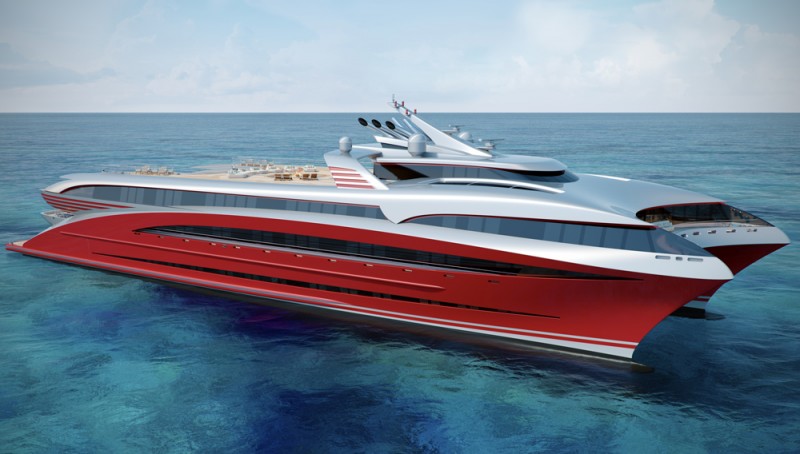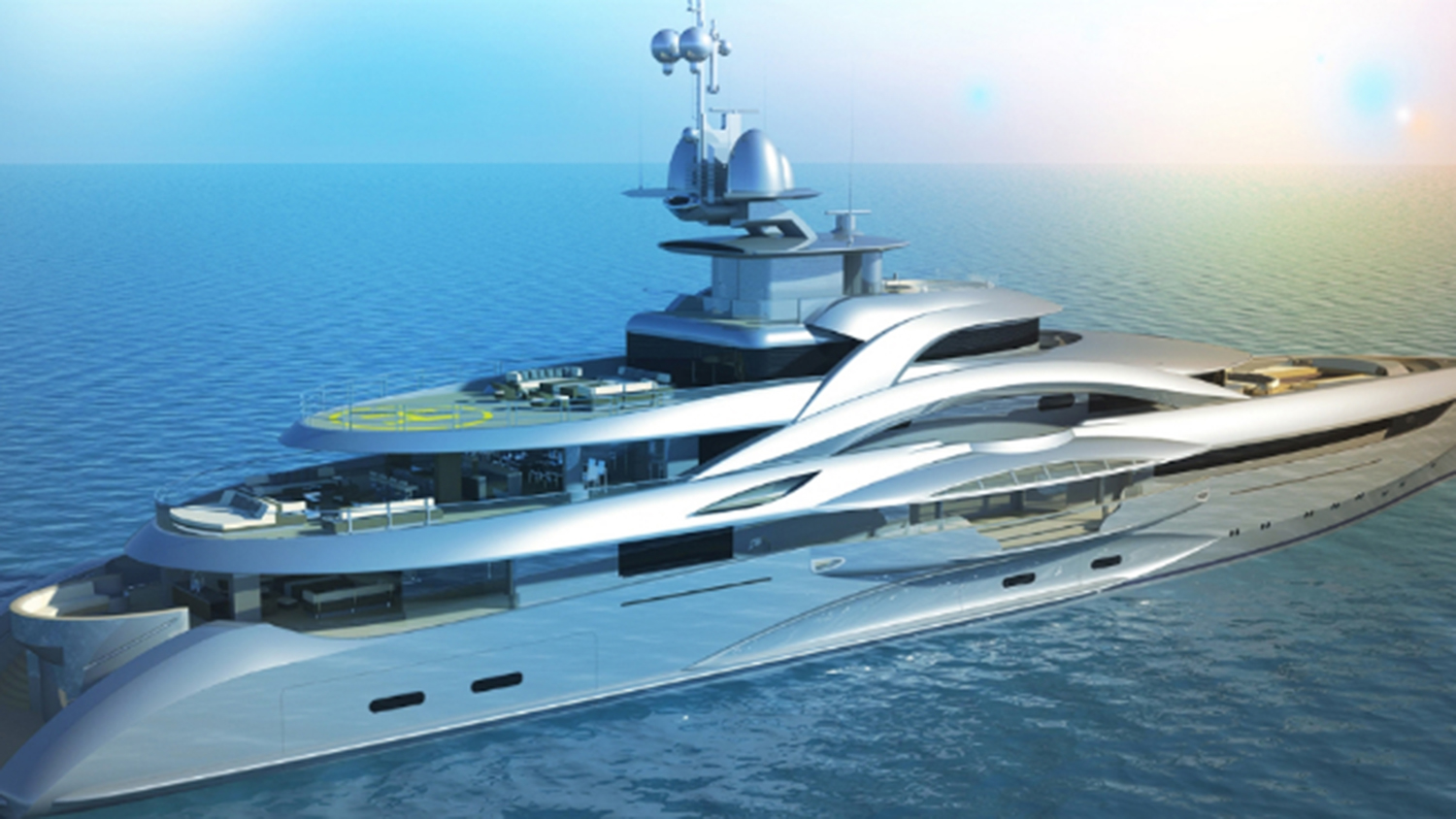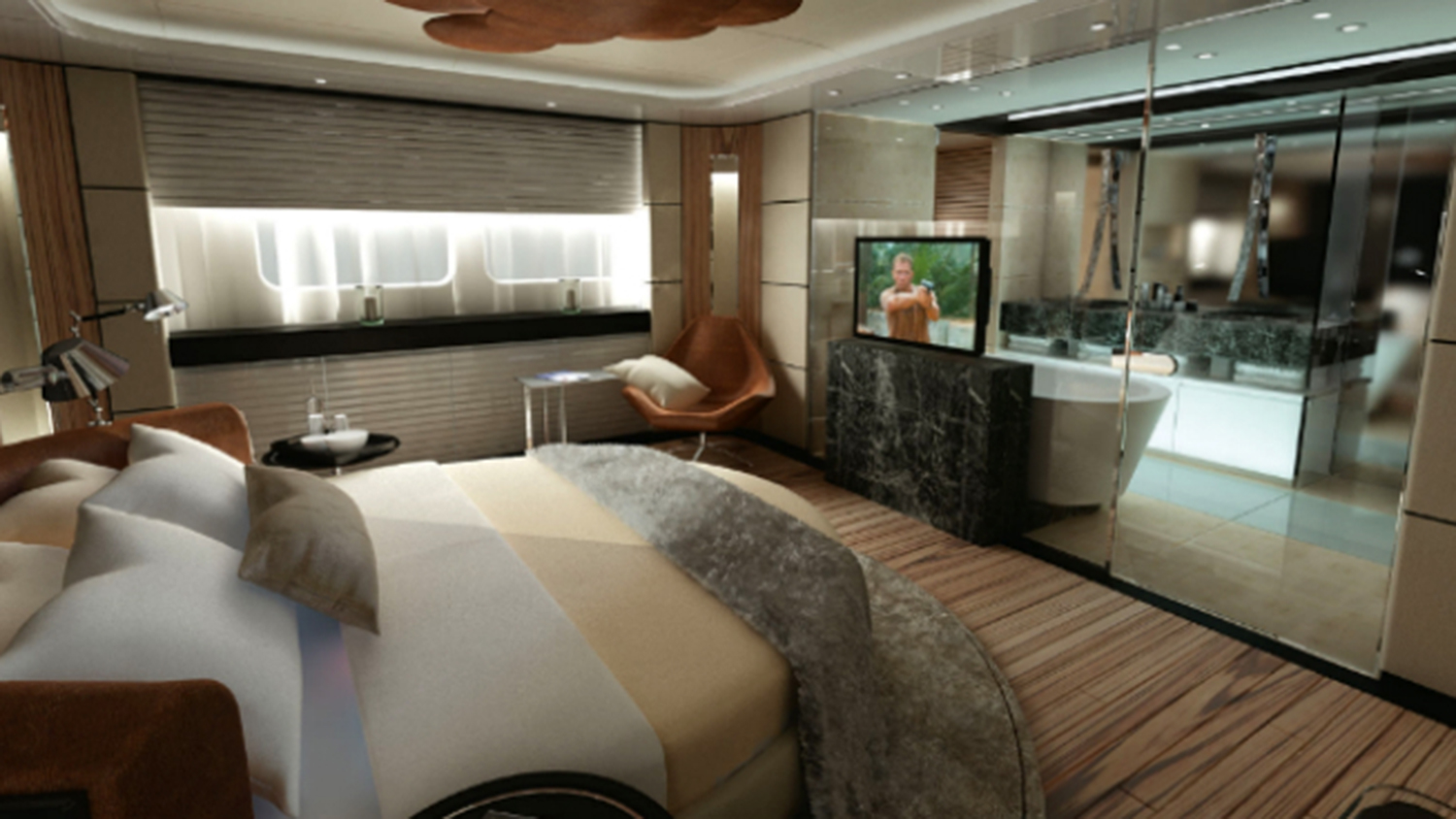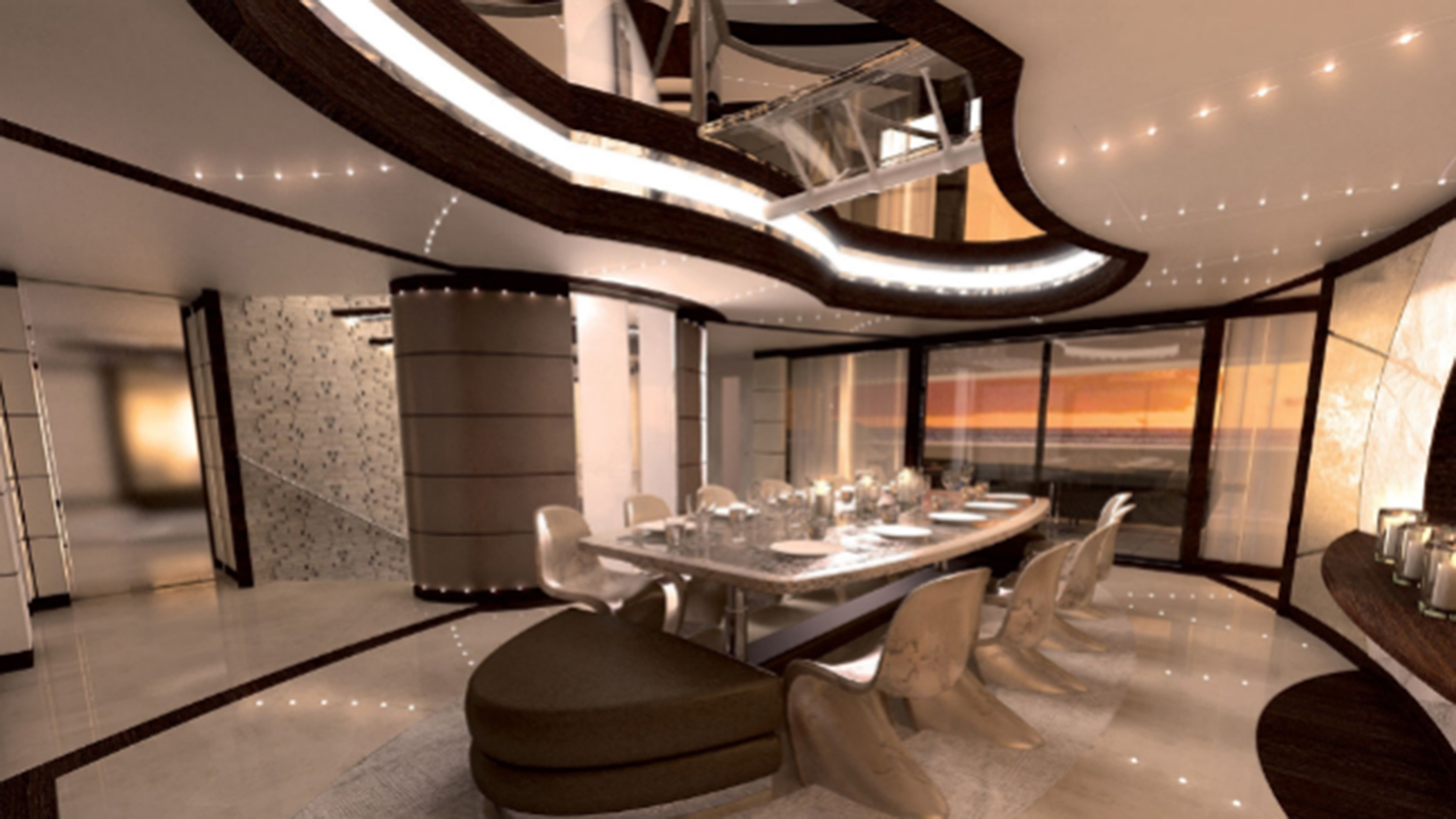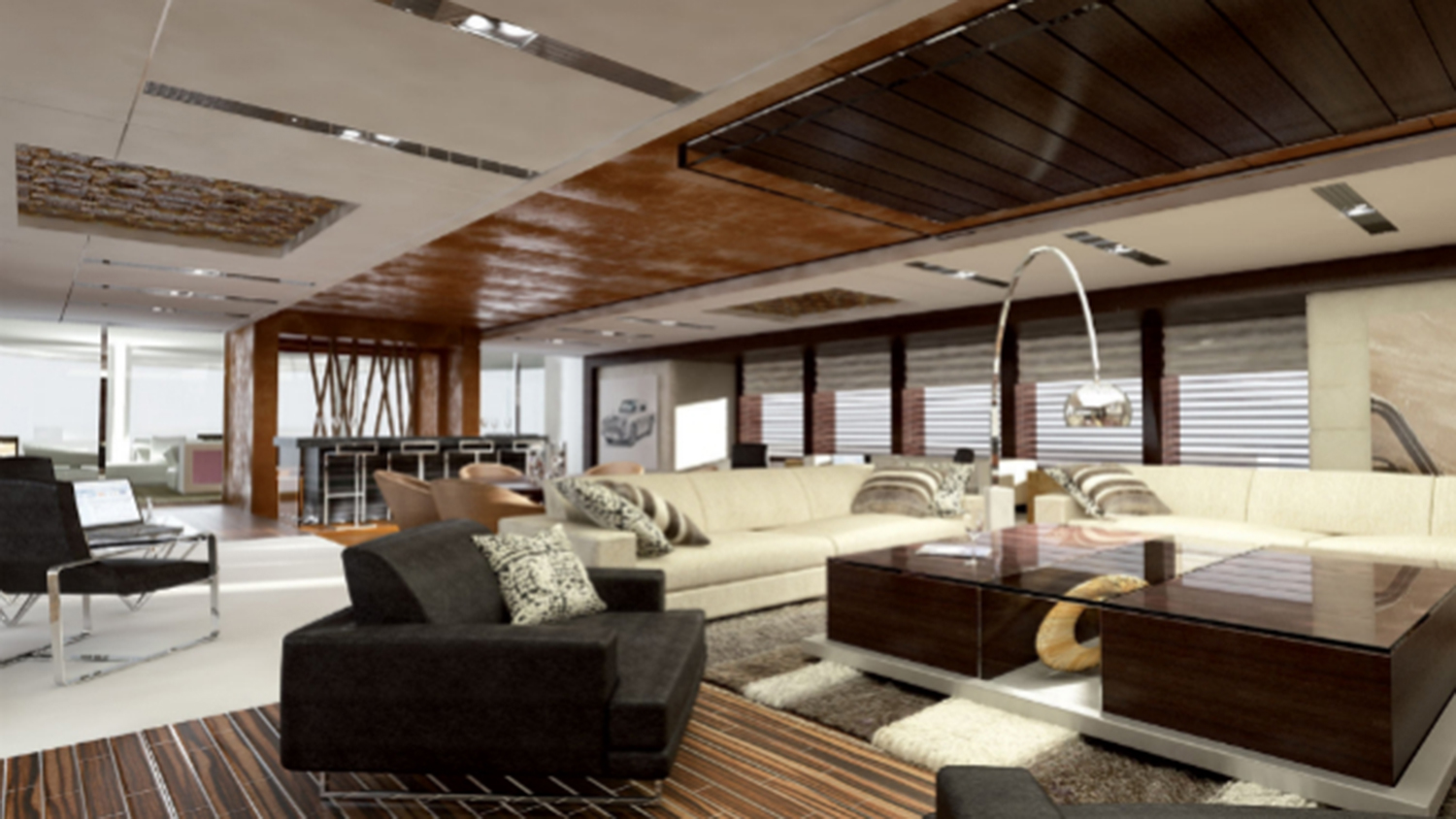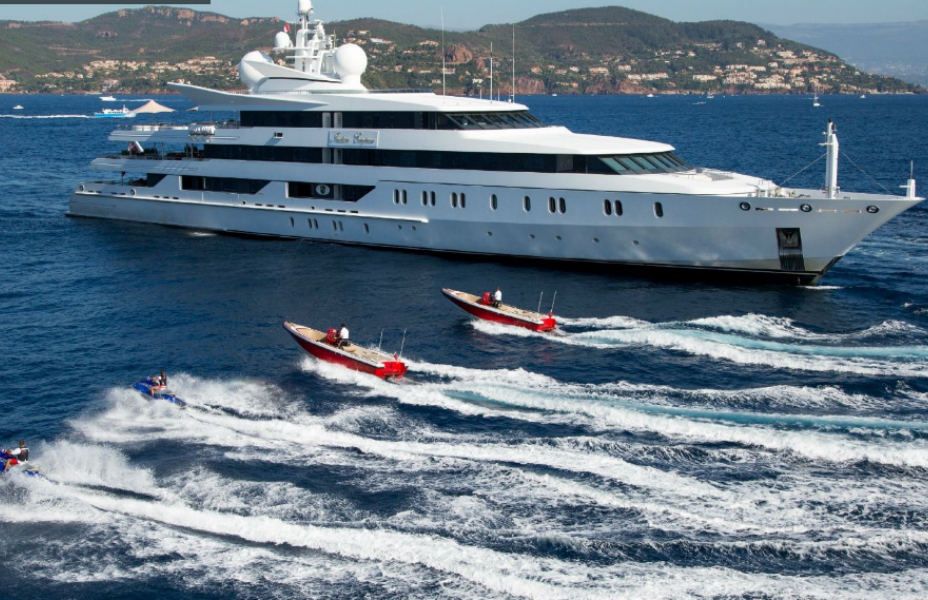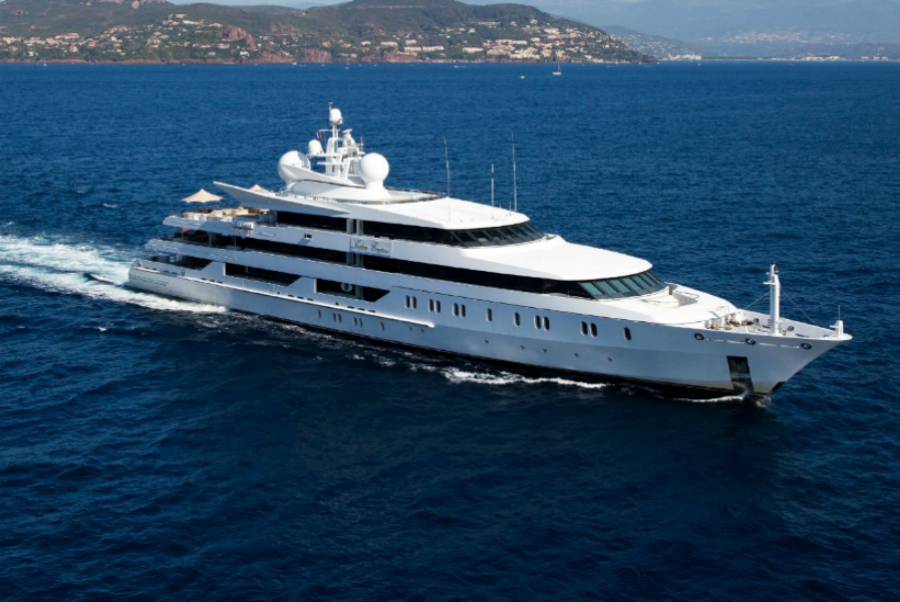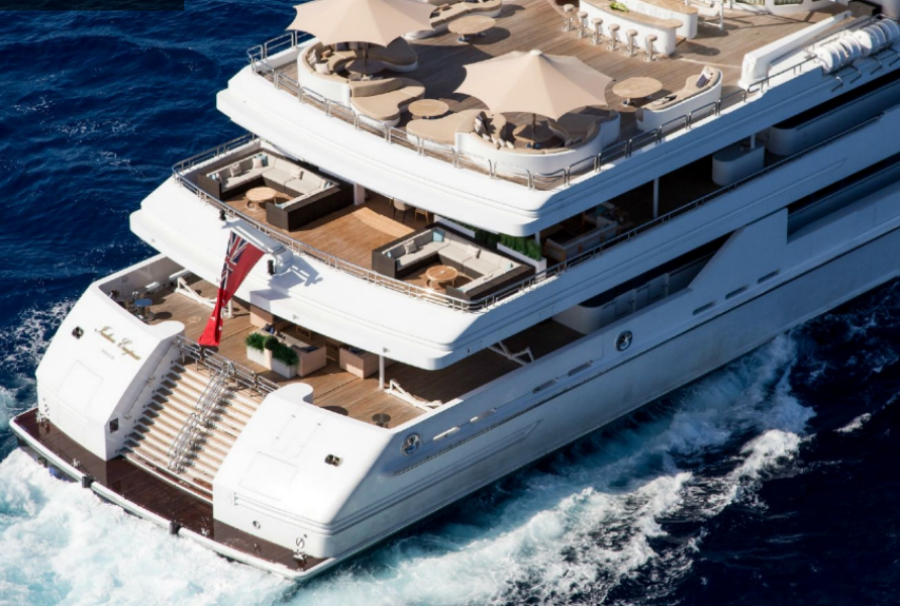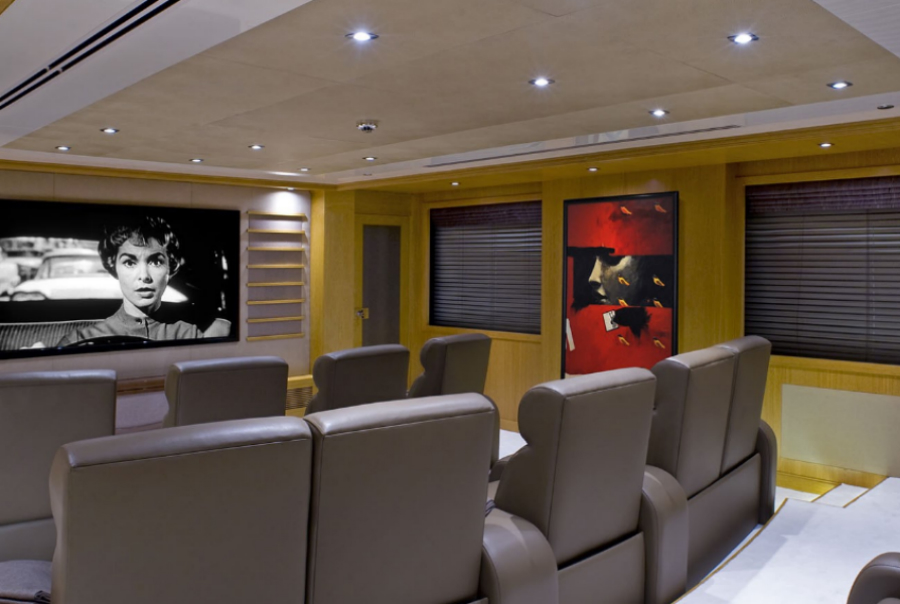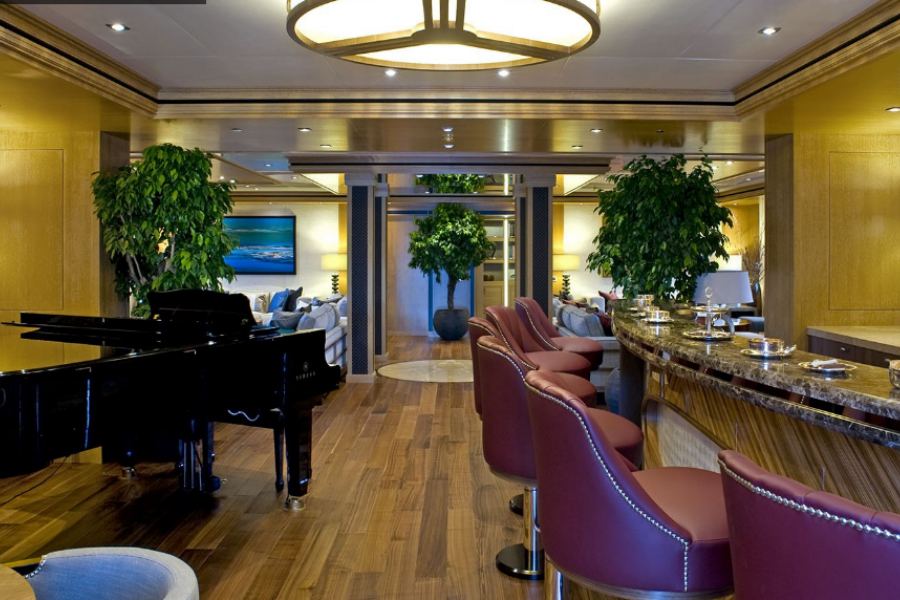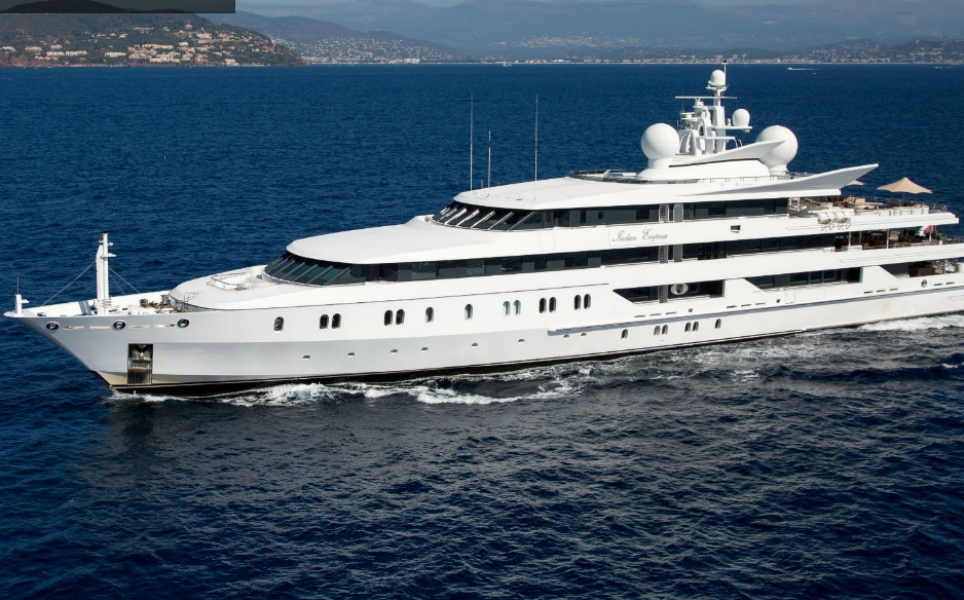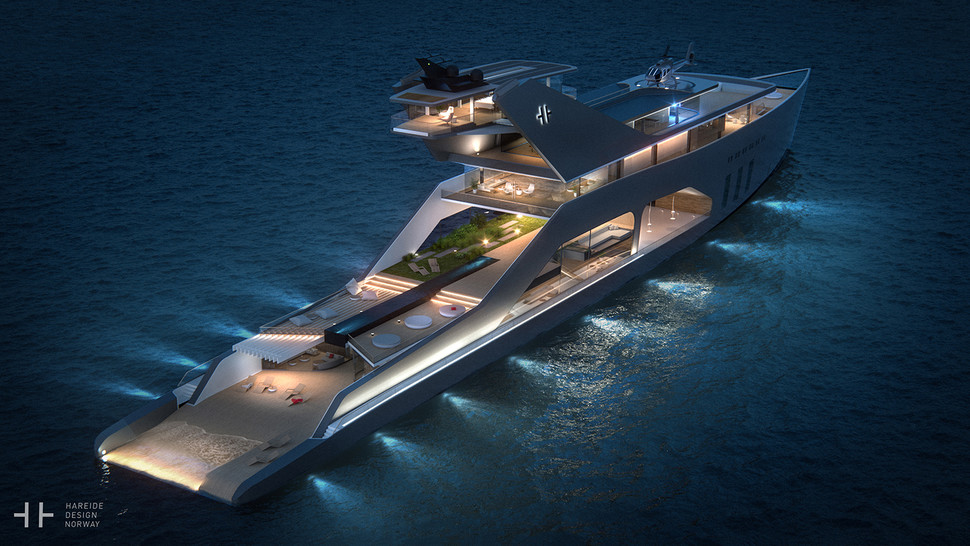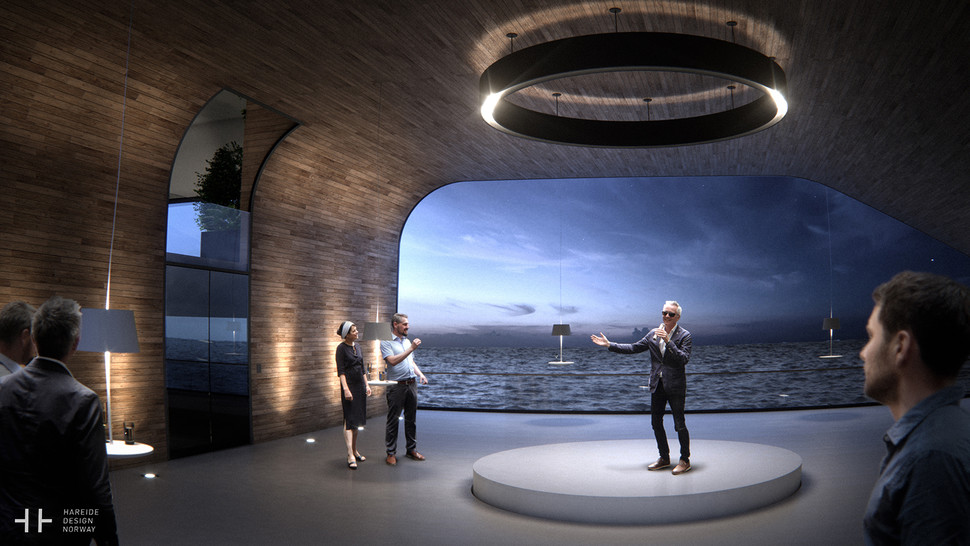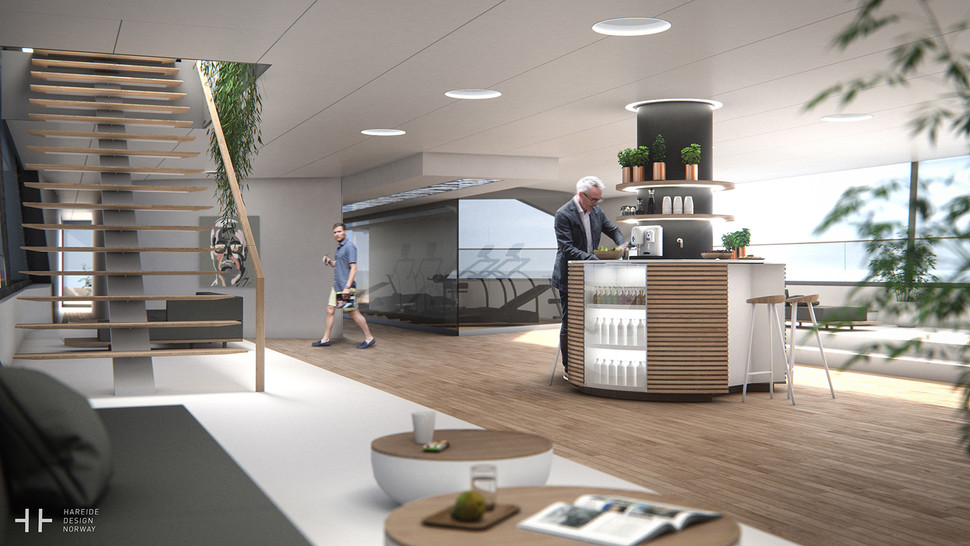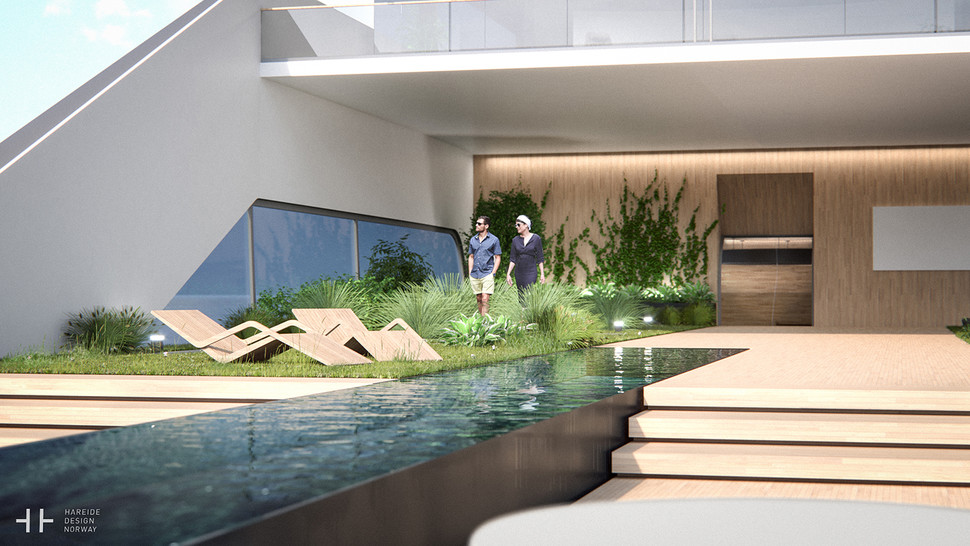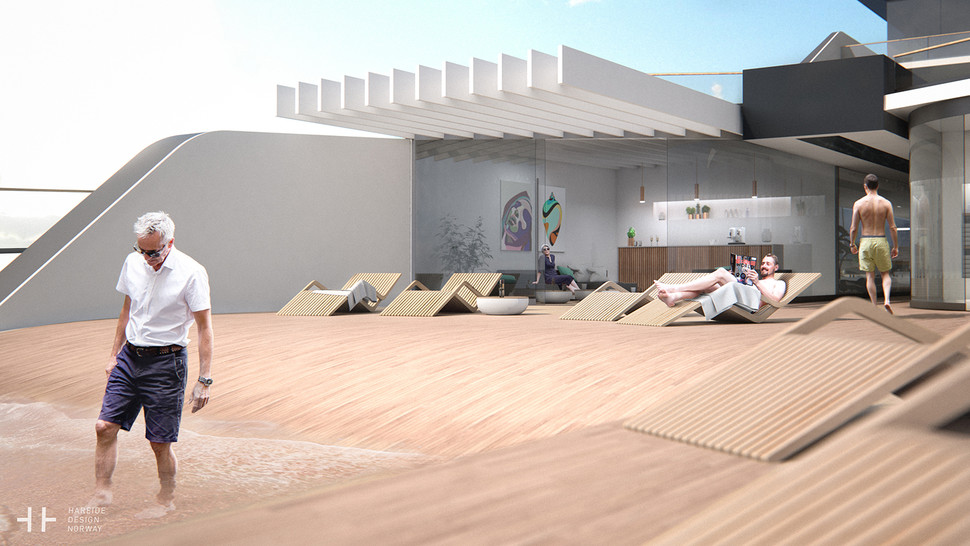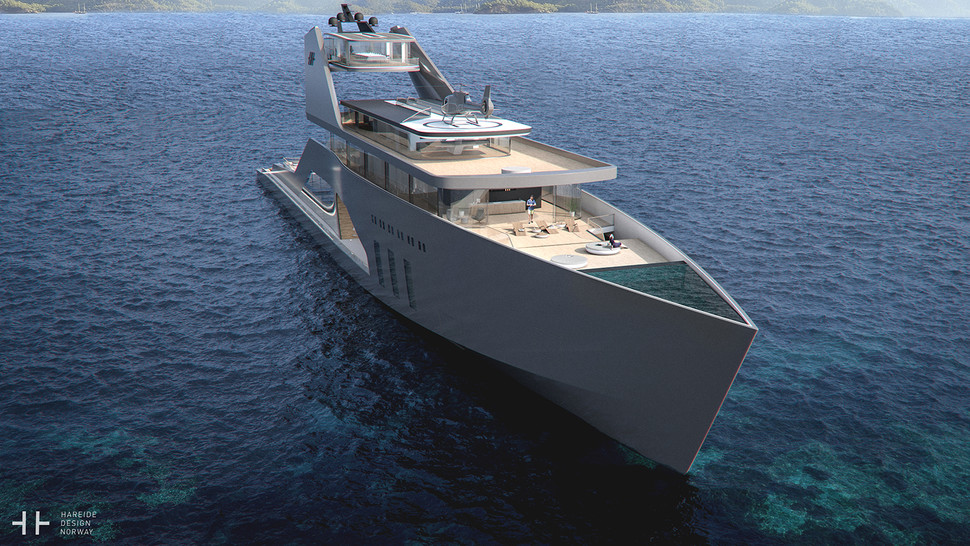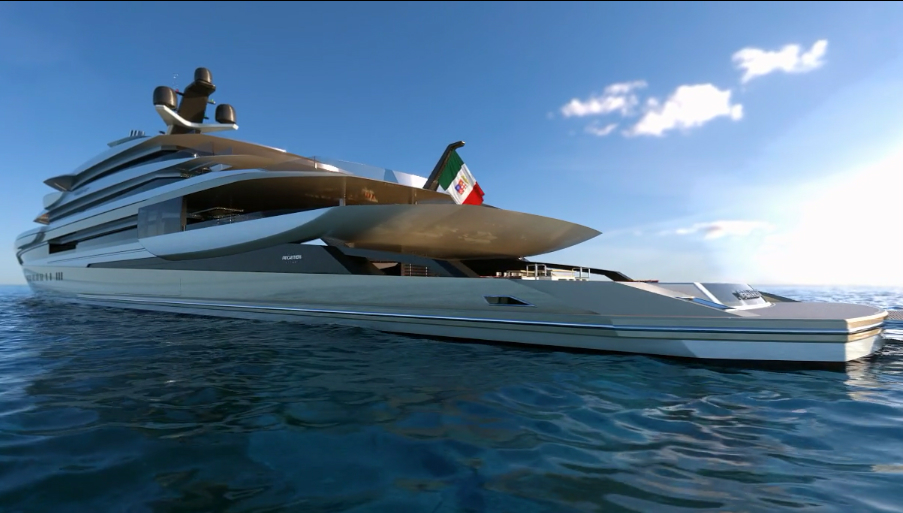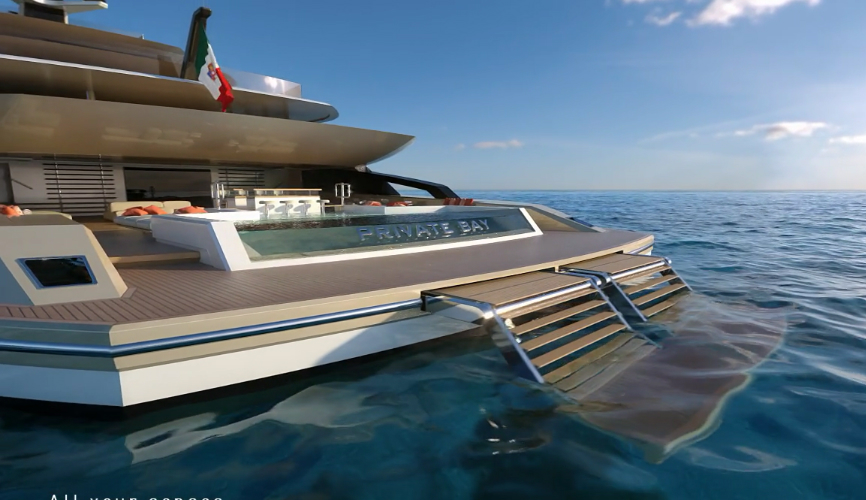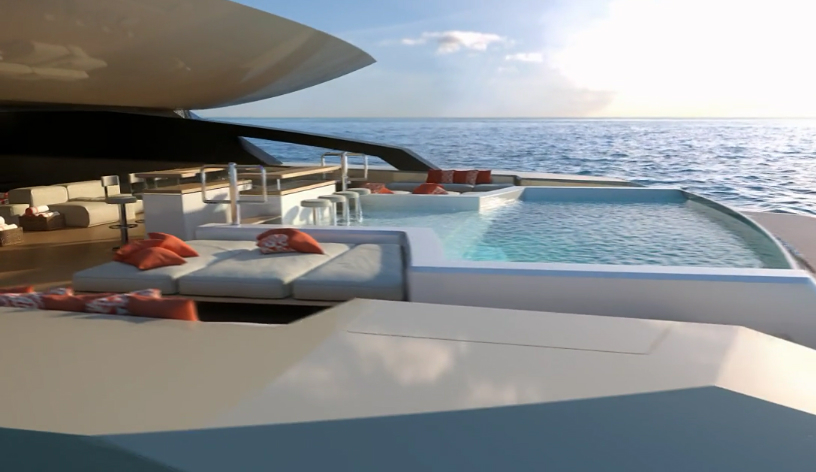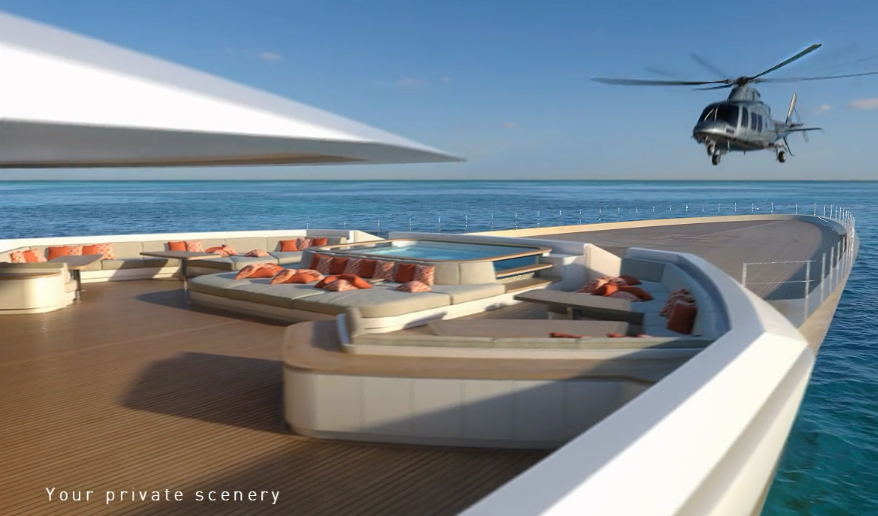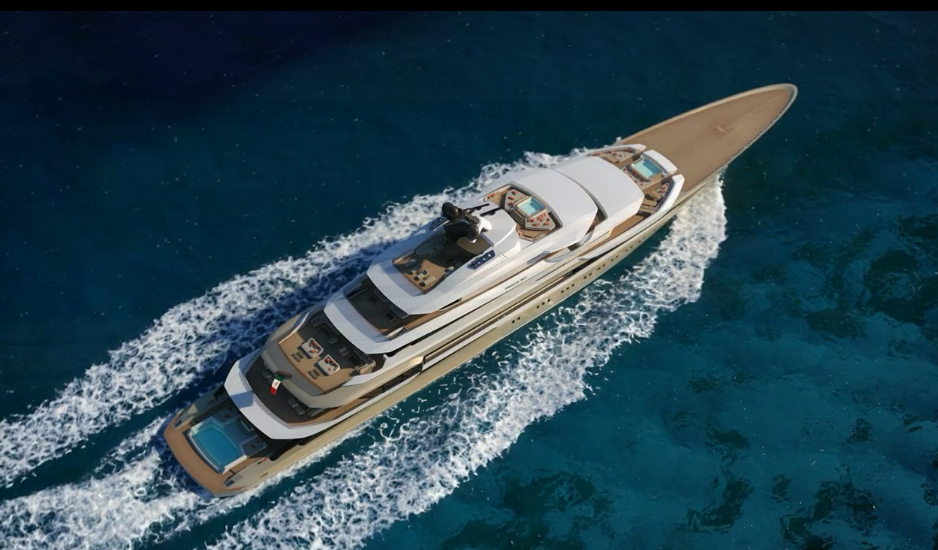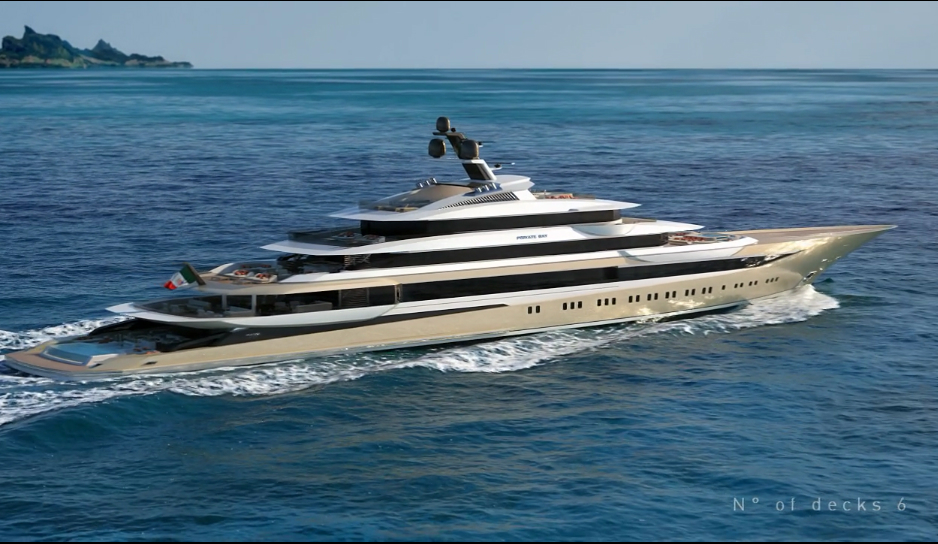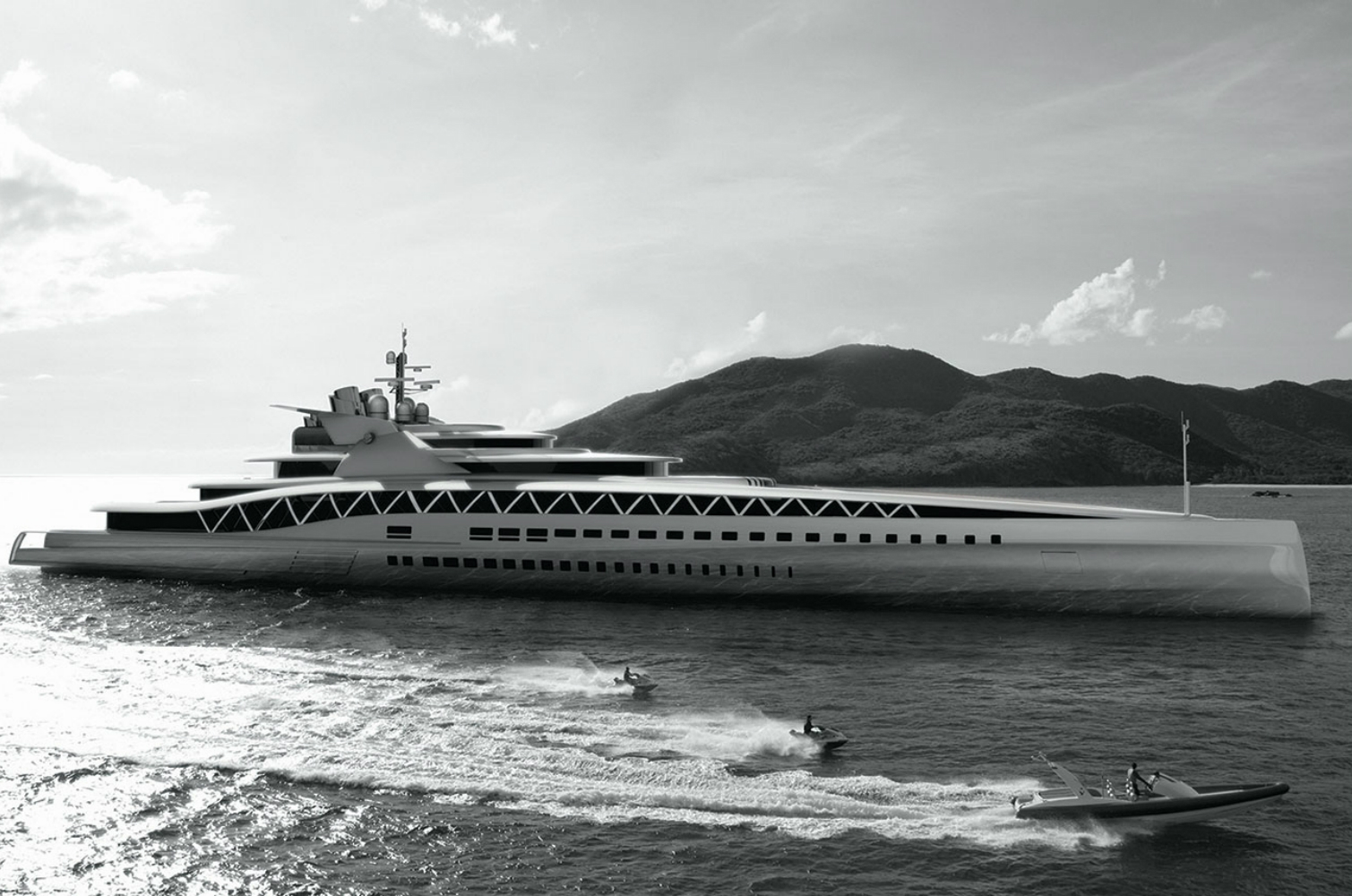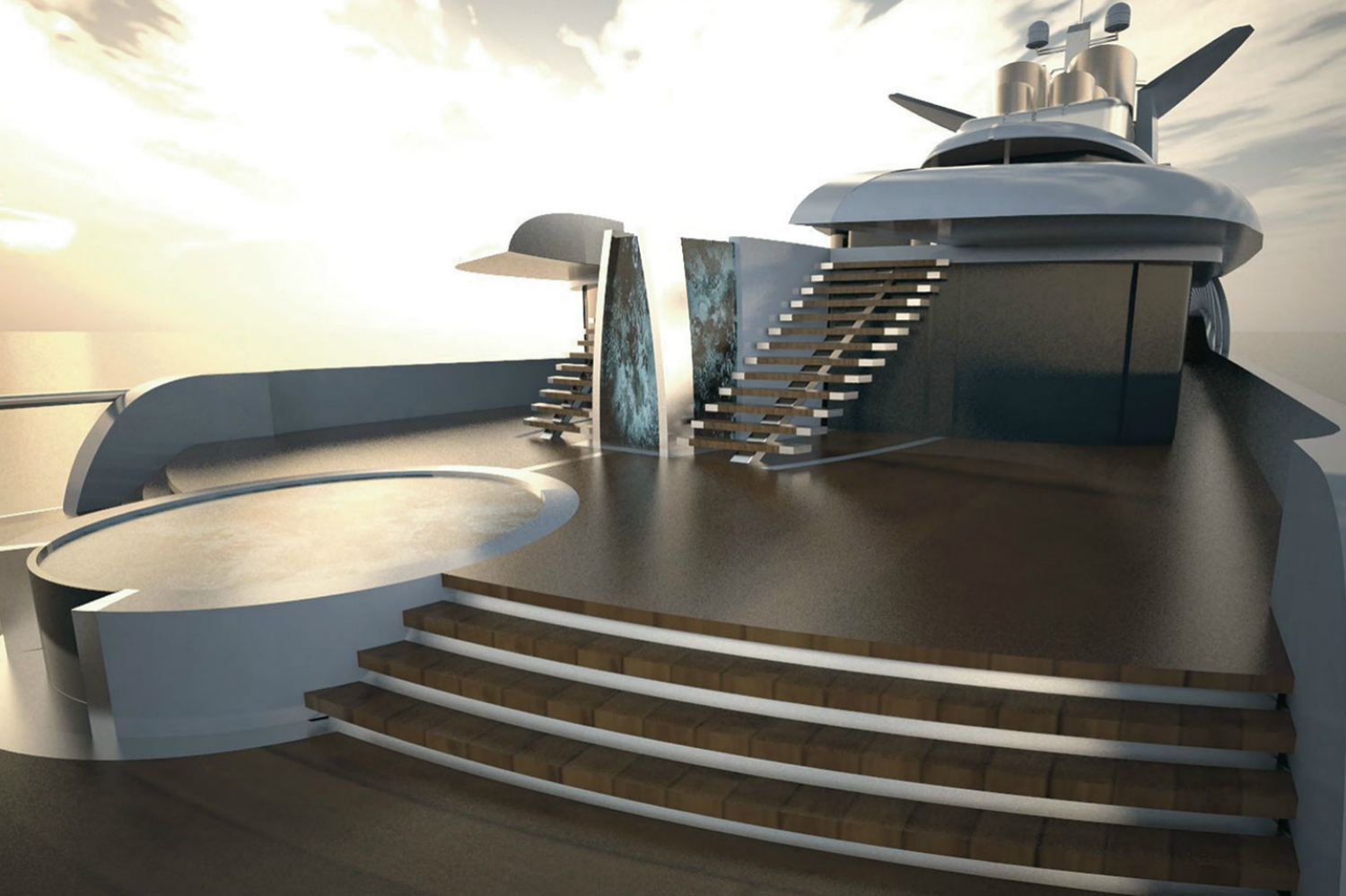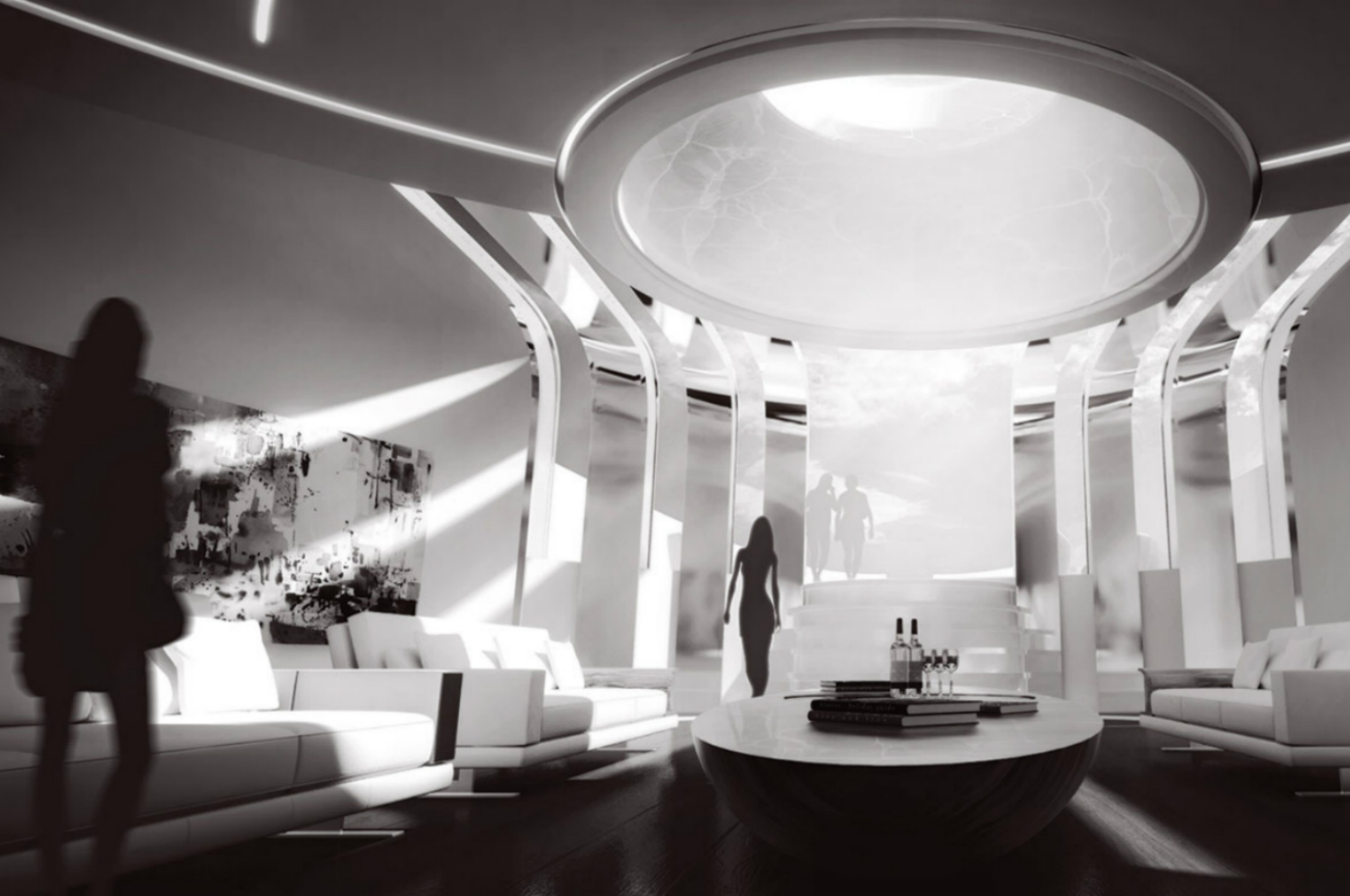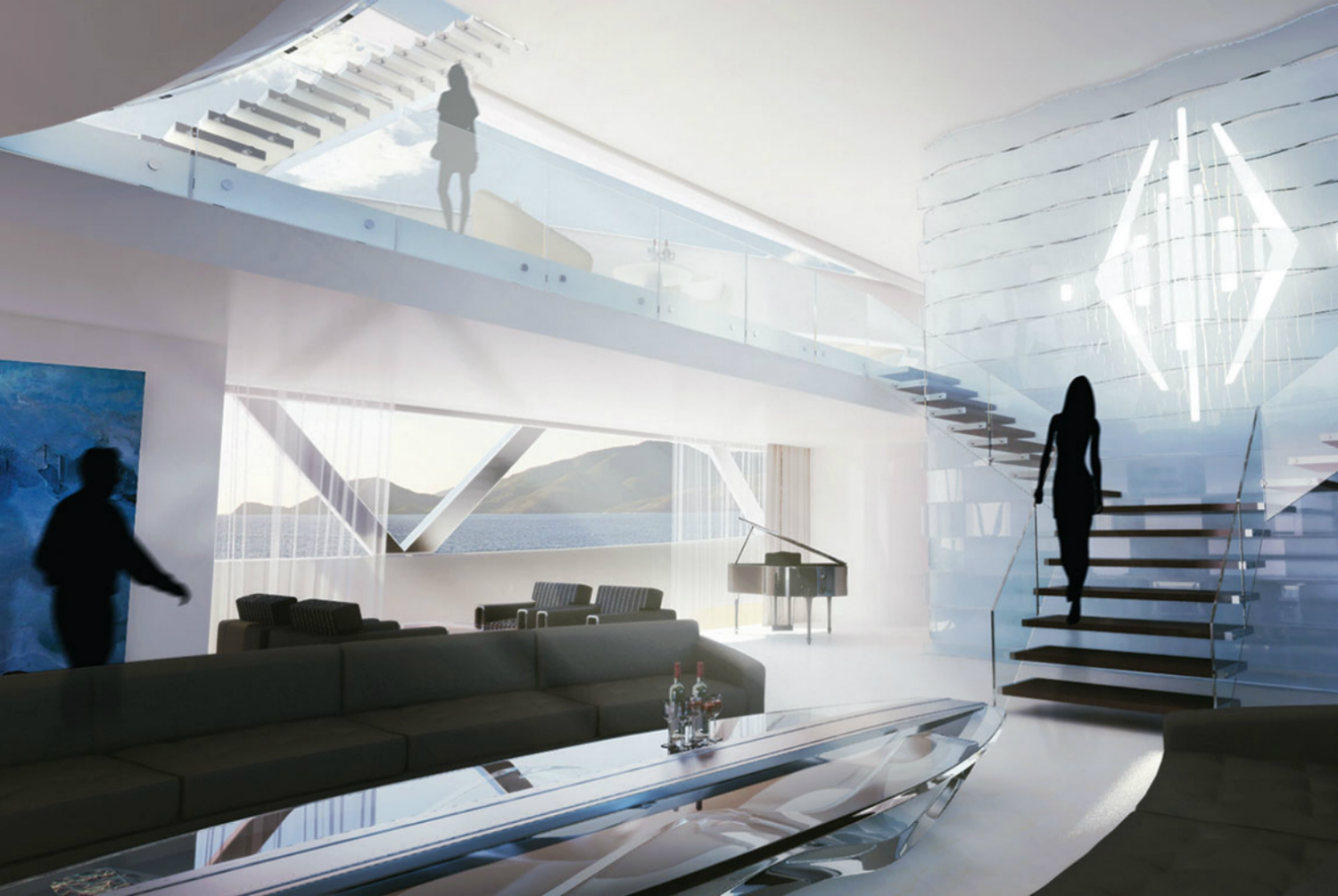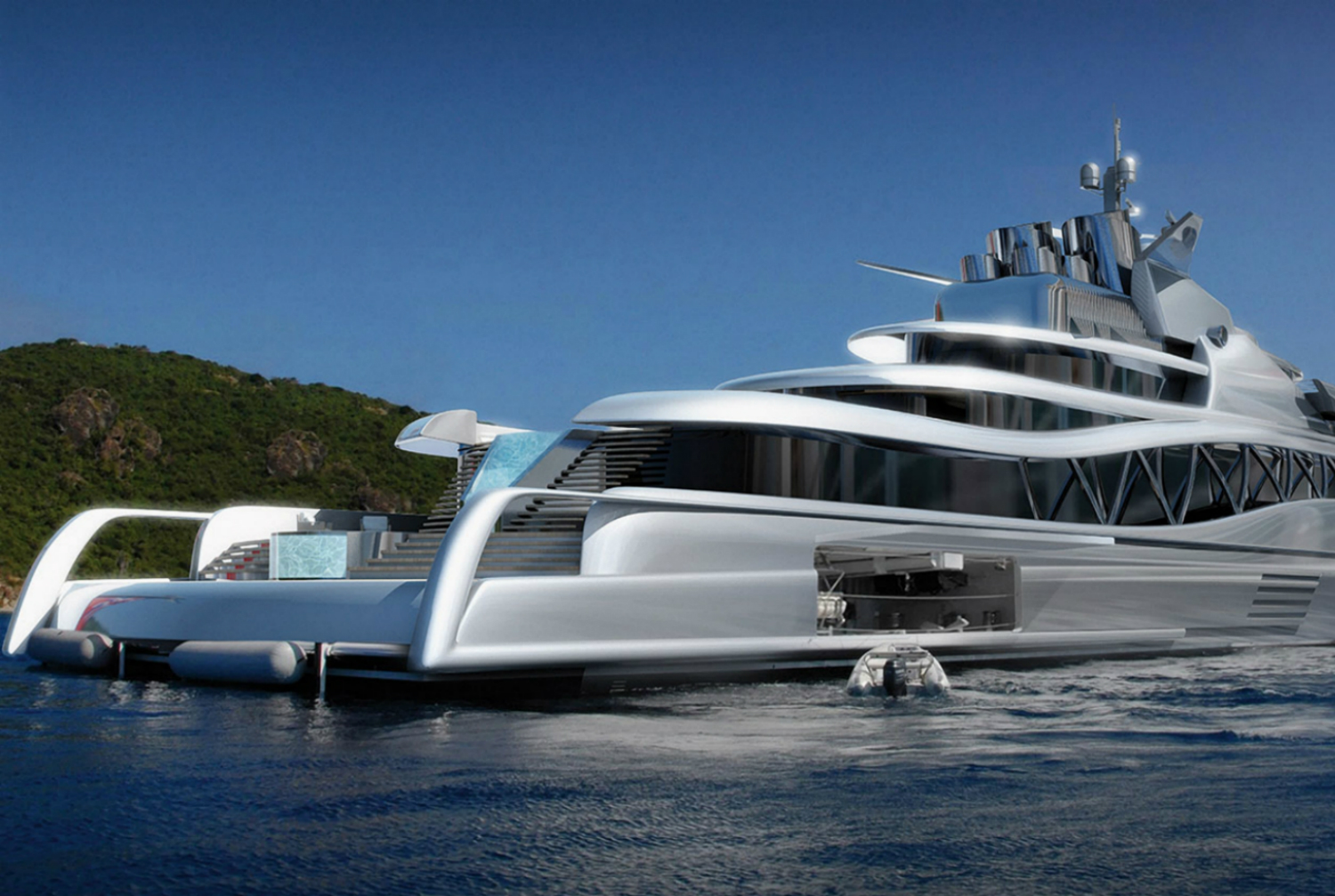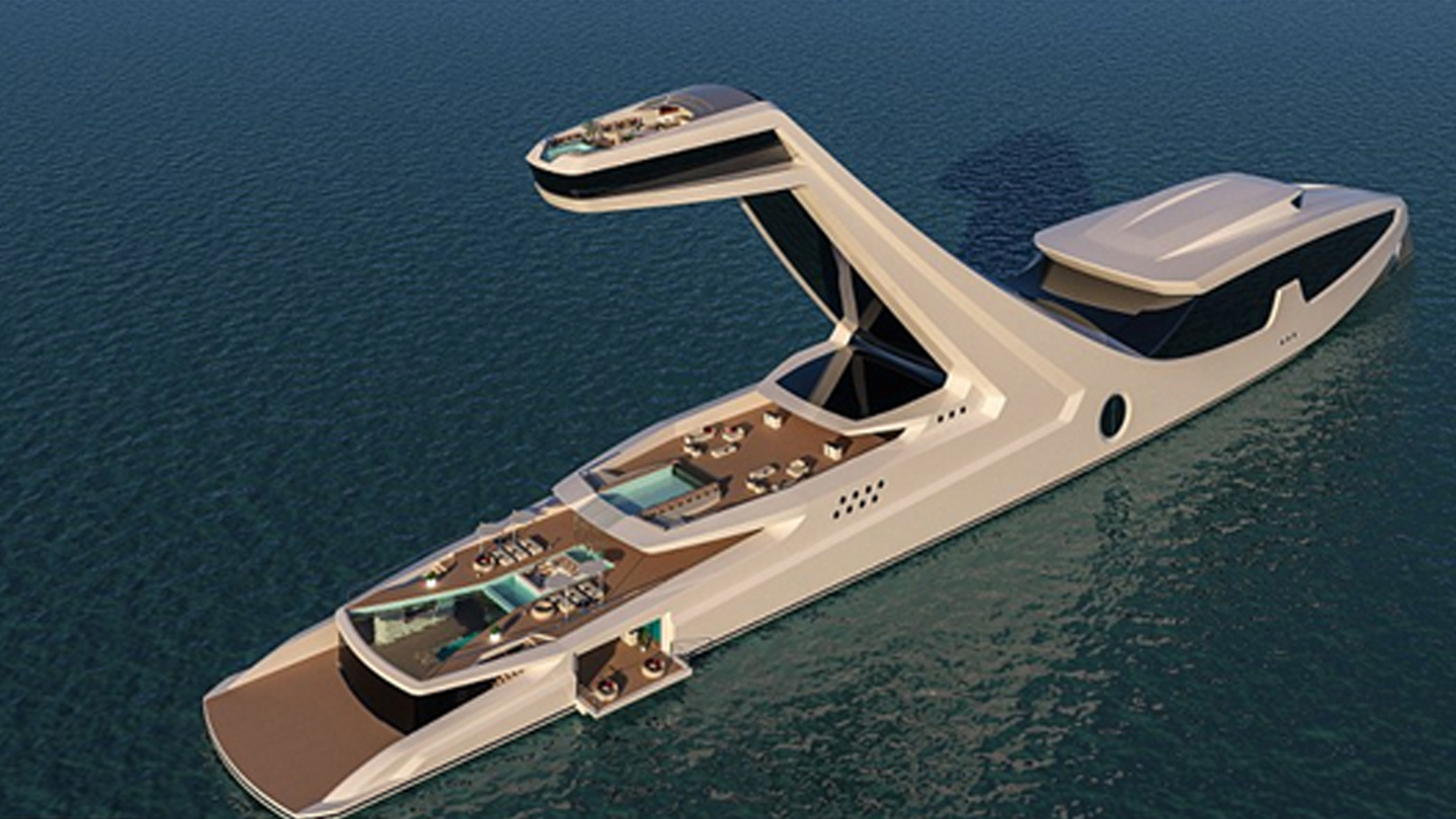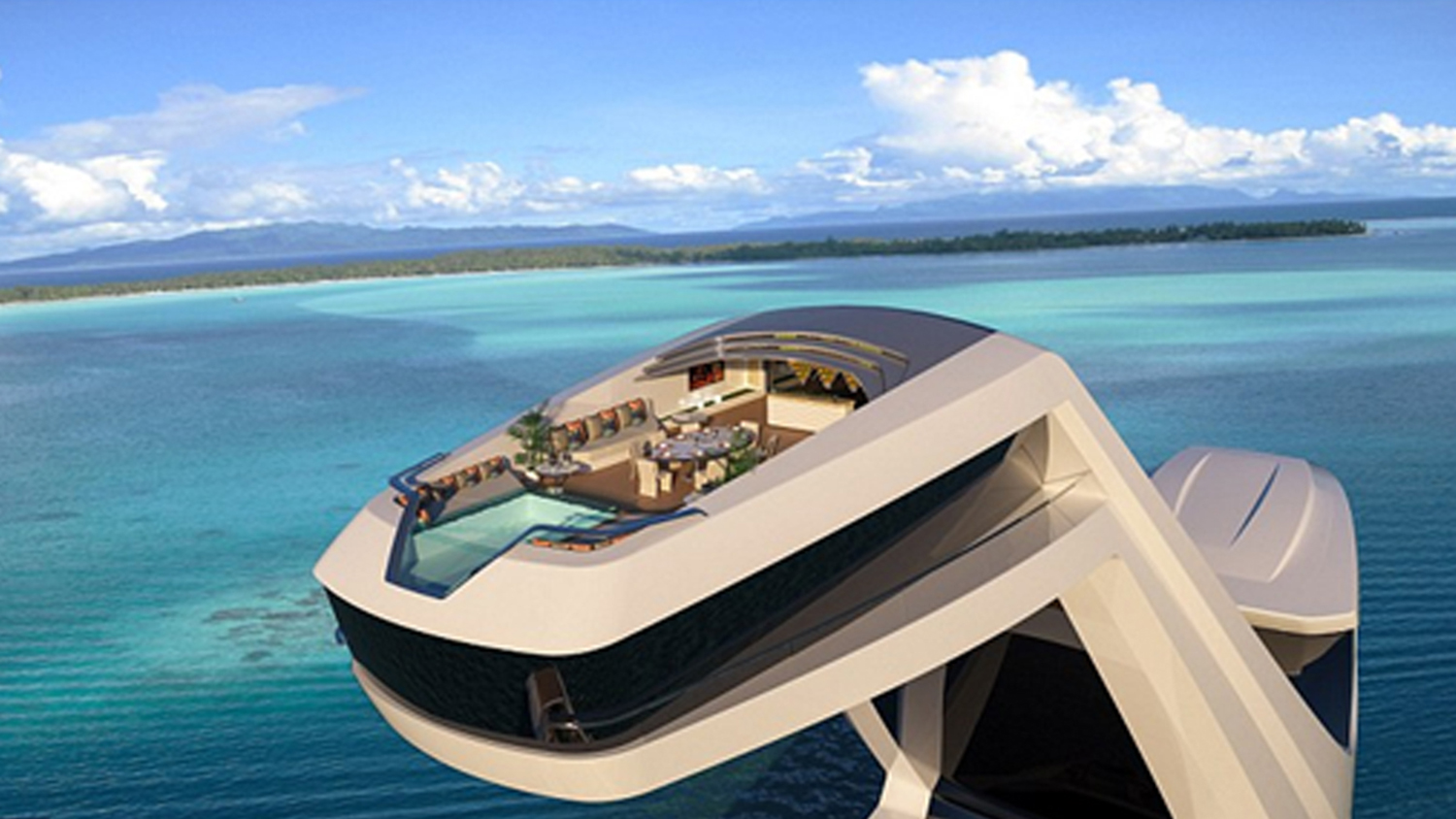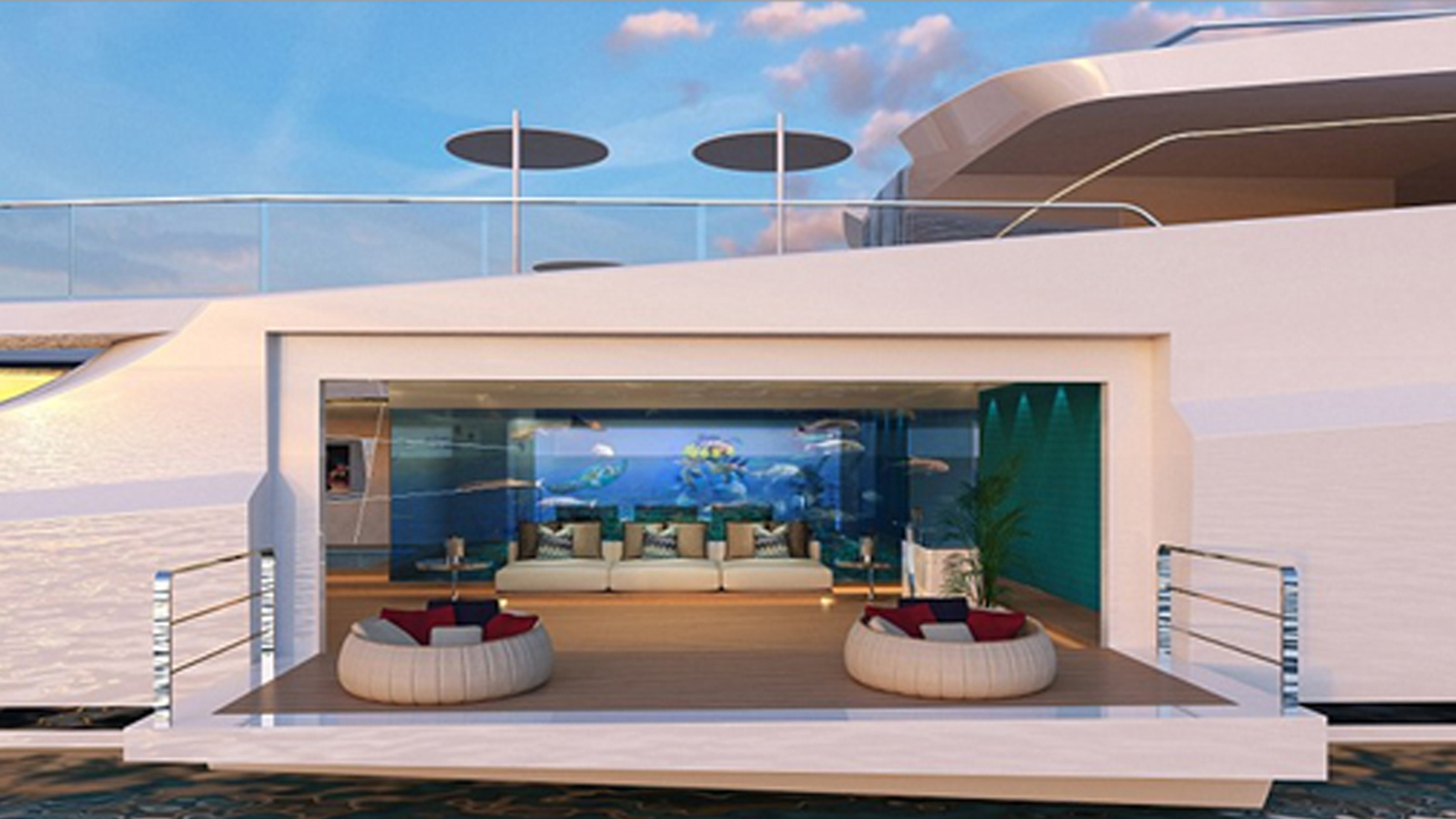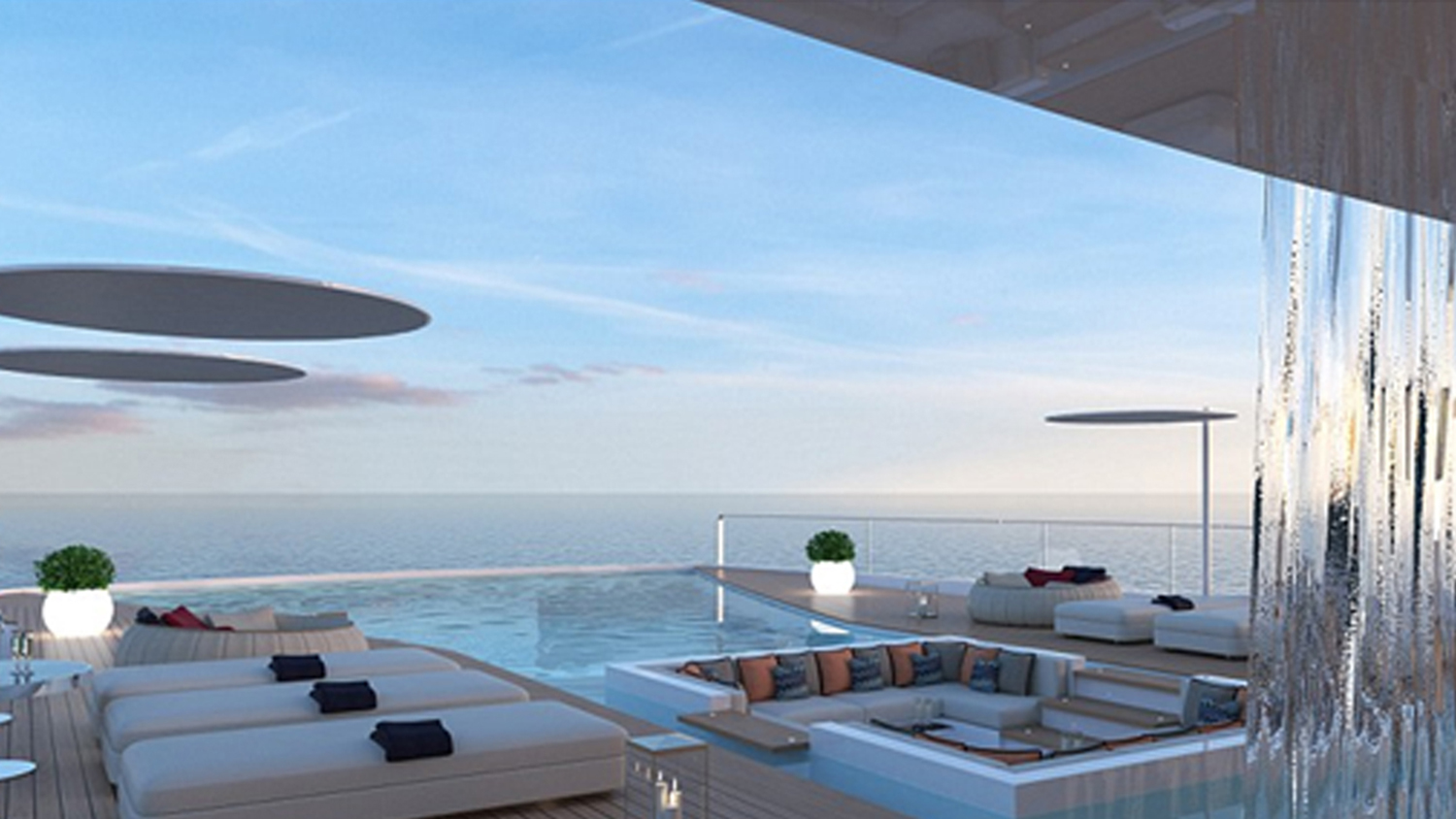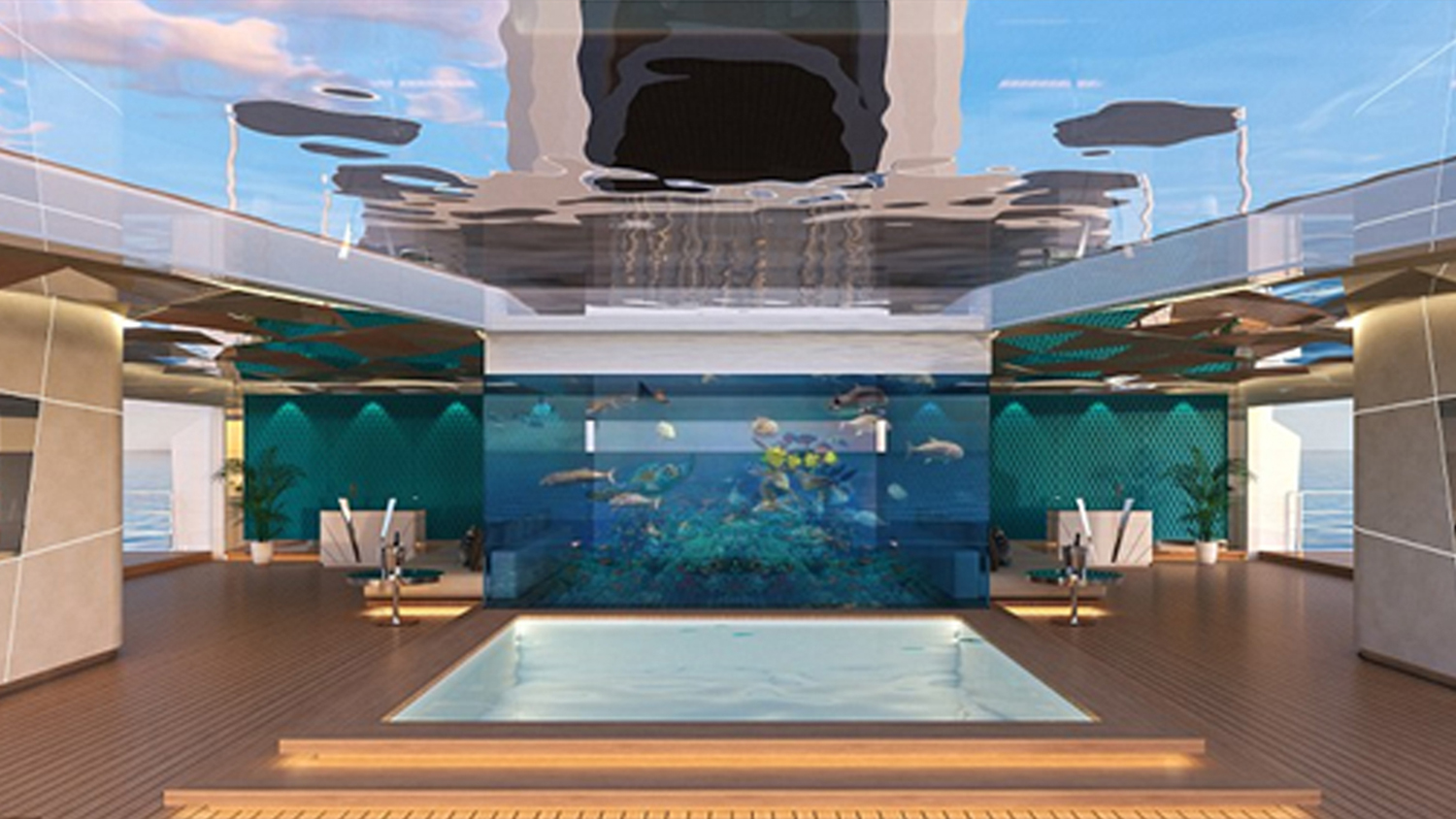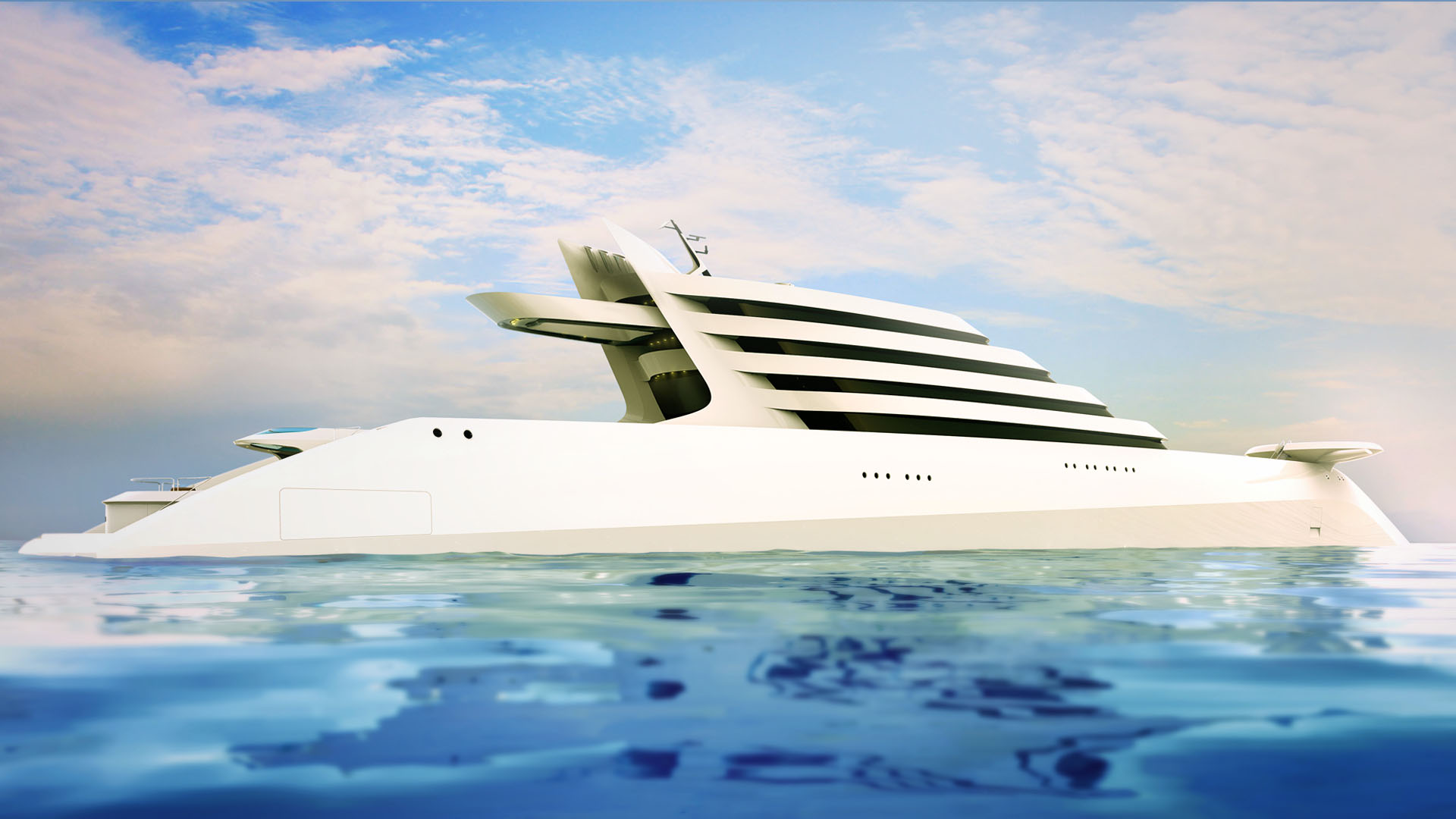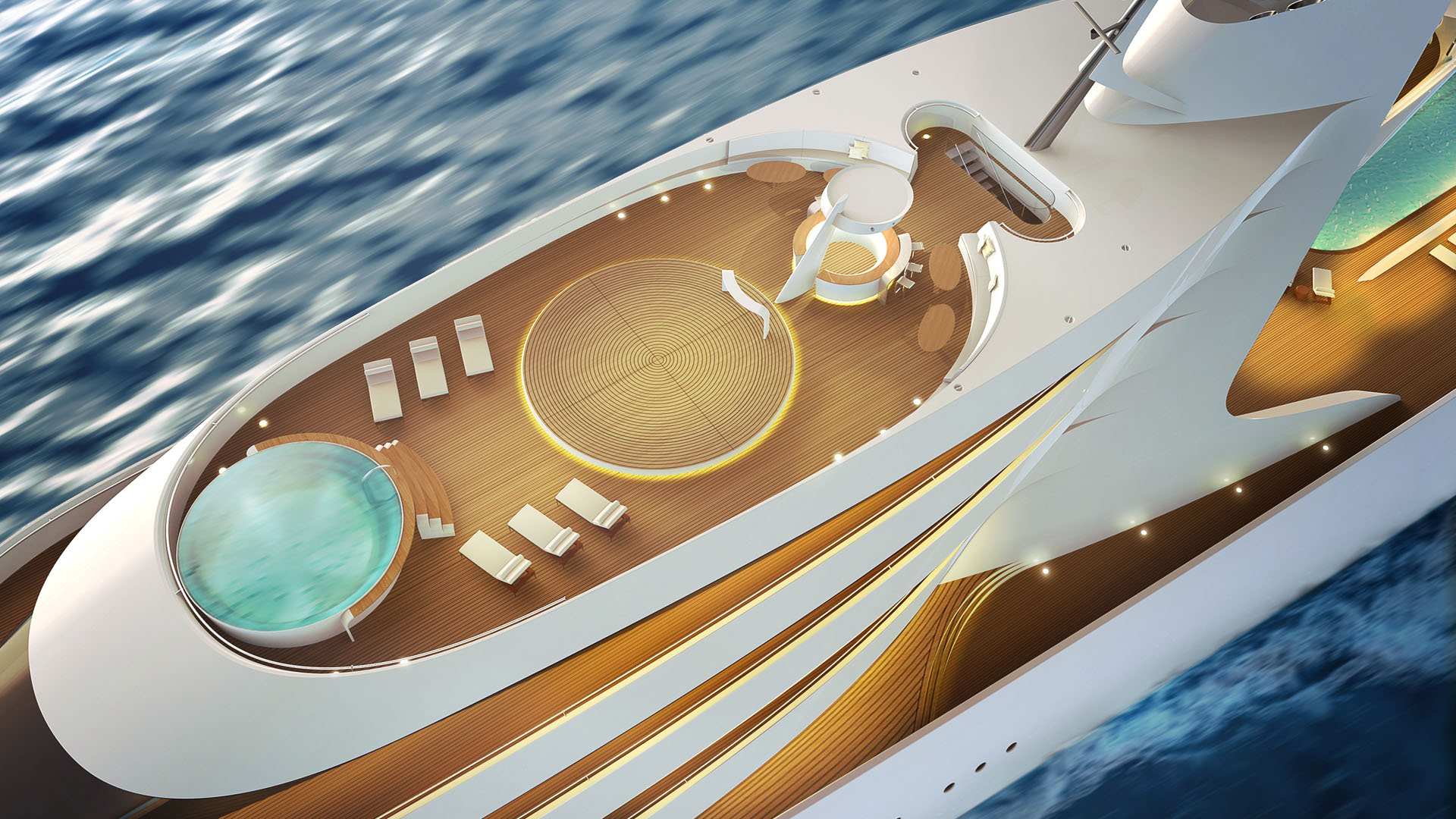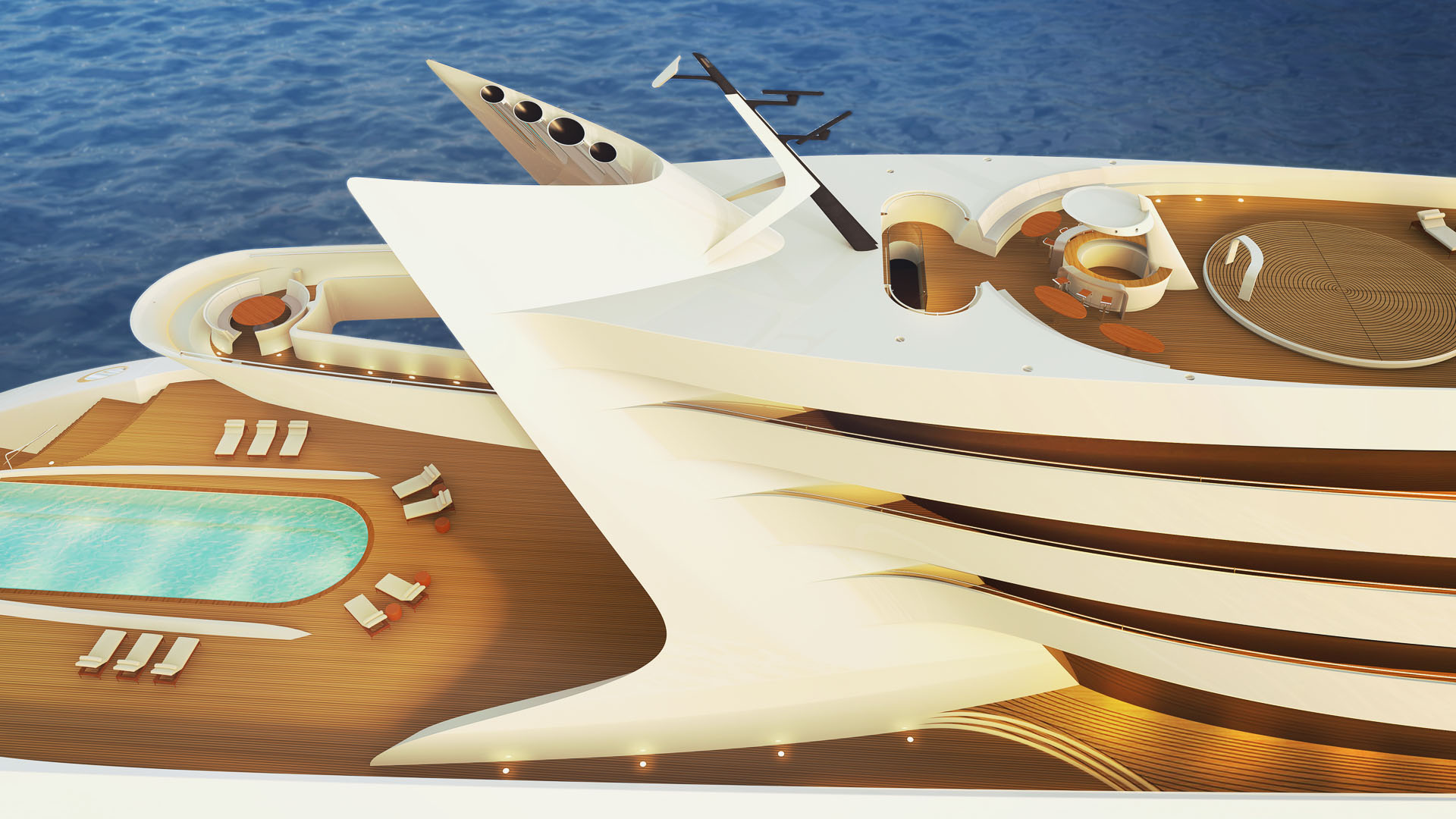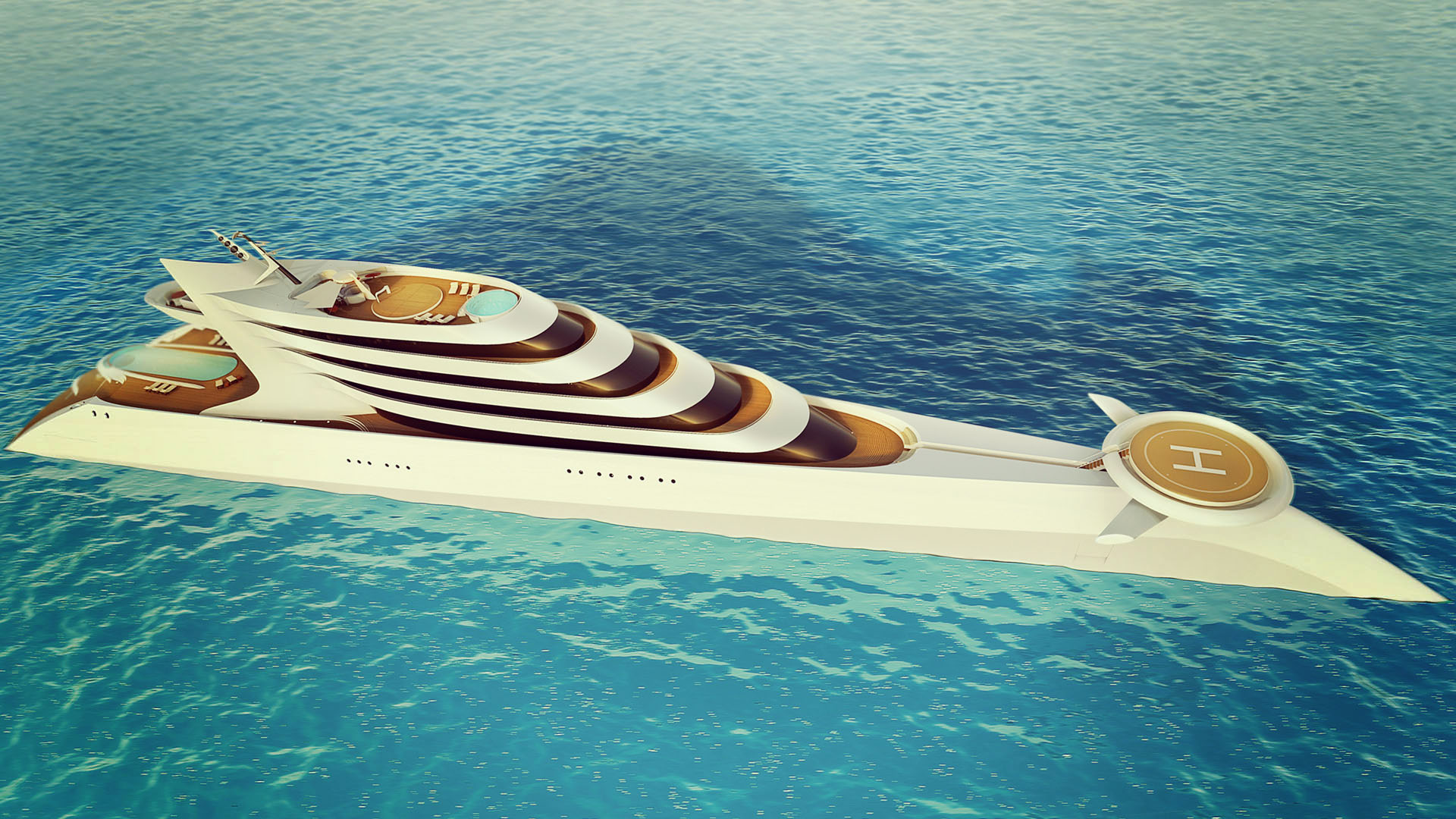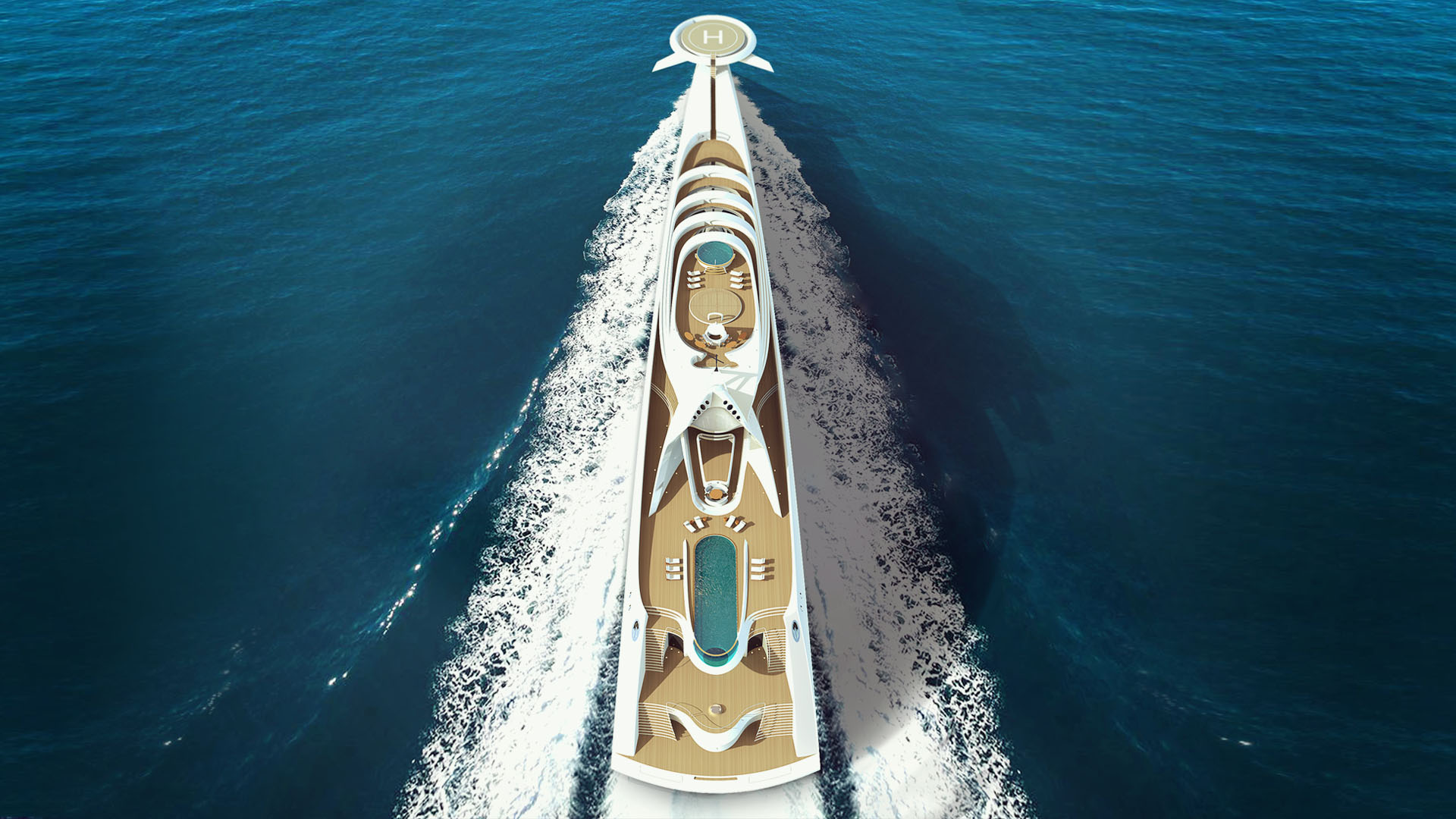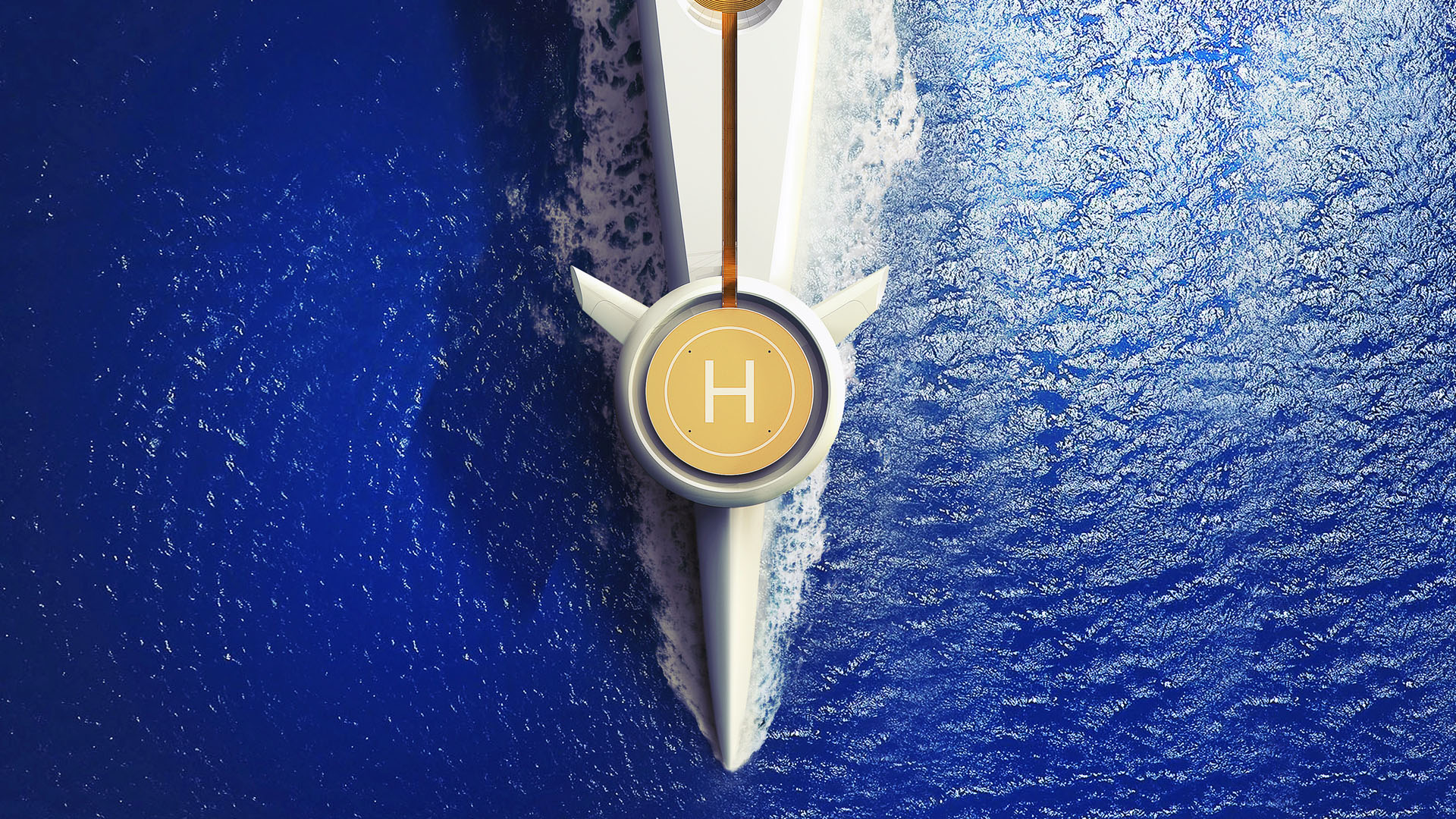
Opinions differ on what separates yacht from a superyacht. Some say 24 meters (about 80 feet) is the minimum length, while others stand strong at 30 meters (about 100 feet). As we take a look at superyachts, we’ll start with the higher cut-off, as there’s no shortage of interesting and, in some cases, outrageous superyachts out there. The vessels below are placed in order by overall length according to their designers. Some are currently for sale, starting at about $30 million, and there’s one for rent (you may not believe the weekly rental rate). Some of the superyachts below have been produced, while others are recent concepts, still waiting for buyers with hefty checkbooks to commission the build. Enjoy!
Spectre: 30.33 meters / 100 feet
The smallest superyacht in our roundup is also the fastest. The AB100 Spectre from Fila Group’s AB Yachts tops out at 62 mph and can cruise at 52 mph with three 1900-hp diesel engines, each paired with a waterjet thruster. The living space can be augmented by the stern garage area, which converts into a beach house.
PlanetSolar: 31 meters / 101 feet
The Tûranor PlanetSolar holds the title of the world’s largest solar yacht. The vessel is covered with 500 square meters of solar panels, its sole source of power. PlanetSolar launched in 2010 and set out to be the first solar-powered yacht to circumnavigate the globe, a leap forward for the promotion alternative energy. The journey set five Guiness World Records and spanned 19 months with a crew of five. SolarPlanet’s aerodynamic catamaran design has a top speed of 14 knots.
Majesty 155: 47 meters / 154 feet
Not just a boat with a pretty bow, the Majesty 155 is also a CEDIA Awards-winner for the best smart home technology installation and integration on a yacht. The ship’s lighting, navigation, and audio-visual system can be controlled via onboard monitors as well as an iPad. Twin 2,011-hp engines allow the Majesty 155 a 4,200 nautical mile range.
Time For Us: 52 meters / 171 feet
There’s room for 12 guests and 13 crew members on the classic Feadship superyacht, Time For Us. Launched in 1994 and renovated in 2007 and 2008, its extensive dark wood paneling and comfortable furniture are built for comfort, including stabilizer systems that are active underway and at anchor. With a range of 5,700 nautical miles at its 13-knot cruising speed, this yacht can take you wherever you’d like to go — if you have the time.
Galaxy of Happiness: 53.3 meters / 175 feet
Built by Latitude Yachts in 2016, Galaxy of Happiness offers zero-emission cruising using 40 percent less energy than single hull yachts. With exceptional stability, she cruises at 24 knots with a maximum speed of 30 knots. With space for six guests and six crew, she is currently for sale for just under $32 million.
Galactica Super Nova: 70 meters / 230 feet
Concert lovers will appreciate the Galactica Super Nova’s bow deck, which serves as an outdoor cinema and concert space when not in use as a helipad.
Swath 75: 75 meters / 246 feet
Zero emission fuel-cell technology powers Fincantieri’s Swatch 75 concept superyacht. Estimated range on hydrogen power alone is 450 nautical miles, with an overall 4,000-nautical-mile range under diesel power. The Swath 75 has space for 12 guests including the owner’s cabin and 24 crew members.
Silver Fast: 77 meters / 253 feet
Plunk down $85 million to reserve a permanent bed in the owner’s suite of the aluminum-hulled Silver Fast, named for its color and speed. With a full house of 18 guests and 18 crew, the Silver Fast can cruise as fast as 27 knots. Built by Silver Yachts and put up for sale by Burgess Yachts, guests on the Silver Fast can enjoy the beach club with gym, massage room and beauty salon, mirrored bar, 8-person hot tub, and outdoor cinema.
ModCat Project L3: 85 meters / 278 feet
With its hybrid catamaran hull, the BMT Nigel Gee‘s ModCat Project L3 cuts through ocean chop at speeds greater than 40 knots. This is thanks to twin water jet thrusters that work in conjunction with the diesel engines, according to Robb Report. A pair of retractable beach pads on each side of the vessel allow plenty of area for water play, just below an upper deck with space for a seaplane, a racing catamaran, and a high-speed rigid inflatable. Other entertainment spaces include a full-sized swimming pool, an open-air fire pit, and an outdoor cinema.
Mars: 90 meters / 295 feet
“Timeless aesthetics without compromise,” was Fincantieri designer Jonny Horsfield’s inspiration for the 90-meter Mars yacht. With “understated luxury,” its capacity of 15 passengers includes the owner and guests. There is also space for 29 including the captain, crew, and staff to attend to passengers’ needs. Mars has a top speed of 18.5 knots and at its 14-knot cruising speed, a range of up to 6,000 nautical miles.
Indian Empress: 95 meters / 312 feet
If you’d like to rent a superyacht before buying one, Burgess Yachts has many appealing choices, including the 95-meter Indian Empress. This floating rental palace cruises the Mediterranean year-round with a fixed rate of 750,000 euros (about $802,000) per week. You can bring 11 other people along as guests, choosing among 17 cabins. The crew of 33 will attend you as you enjoy the Indian Empress’ treatment room, beauty salon, sauna, steam room, massage room, cinema, piano, gymnasium, and gentlemen’s lounge with cigar room. Certified on-board instructors can train passengers in using the ship’s three tenders and four wave runners, plus kayaks, SeaBobs, scuba equipment, water skis, wakeboards, and tows.
108M: 108 meters / 350 feet
When walking around a yacht seems like walking in a nature park, albeit one with aluminum walls, you know you’re on a special vessel. Hareide Designs’ 350-foot concept superyacht, 108M, was designed for guests to imagine that they are communing with nature. The six-level boat has an upper deck garden and a 65-foot infinity pool in the bow. A beach deck in the stern slopes to the water. The hybrid 108M can run on solar power at slow speeds with energy harvested by 3,000 square feet of solar panels.
Private Bay: 120 meters / 394 feet
Fincantieri concept Private Bay designer Horacio Bozzo envisioned the superyacht for an owner who demands an authentic vessel that is luxurious while staying true to the ocean-life experience. The experience of private views and beaches can be shared with 17 other passengers and 31 crew and staff as they travel up to 18.5 knots and a maximum range of about 5,500 nautical miles.
Fortissimo: 145 meters / 476 feet
Sixteen guests including the Fortissimo’s owner can stay in eight suites while the captain, crew, and staff of 48 have their own quarters. Designed for impressive speed in such a large vessel, the Fortissimo employs propulsion diesel turbine engines and four waterjets to reach a top speed in excess of 35 knots.
Shaddai: 150 meters / 492 feet
Gabrielle Teruzzi’s Shaddai concept yacht attracts comment and controversy with its 125-foot elevated master suite complete with infinity pool, terrace, bar, and private dining area. Keep in mind that in relation to the vessel’s 492-foot overall length, the 125-foot owner’s tower (measured from the waterline, not the main deck), is the equivalent of a 5-foot “tower” from the waterline in a 20-foot boat. The rest of Shaddai’s design features includes port and starboard extending decks and an interior aquarium with a view up to the glass-bottomed pool on the main deck, which is also part of a 3,000-square-foot beach club. If the Shaddai were built as conceived, it would be the sixth largest superyacht in the world.
L’amage: 190 meters / 623 feet
Premiered by designer H. Bekradi from HBD Studios at the Monaco Yacht Show in September 2016, L’amage’s design is 32 feet longer than the current longest superyacht in the world (the 591-foot Azzam). Powered by a total of 95,000 horsepower from two diesel engines combined with a pair of gas turbines, L’amage has a projected top speed of 32 knots. Capable of holding 1,500 tons of fuel, the cruising range is about 6,000 nautical miles. In addition to a private apartment for the owner and quarters for the 70 crew members, the plan calls for 14 staterooms for a total of 28 guests.
